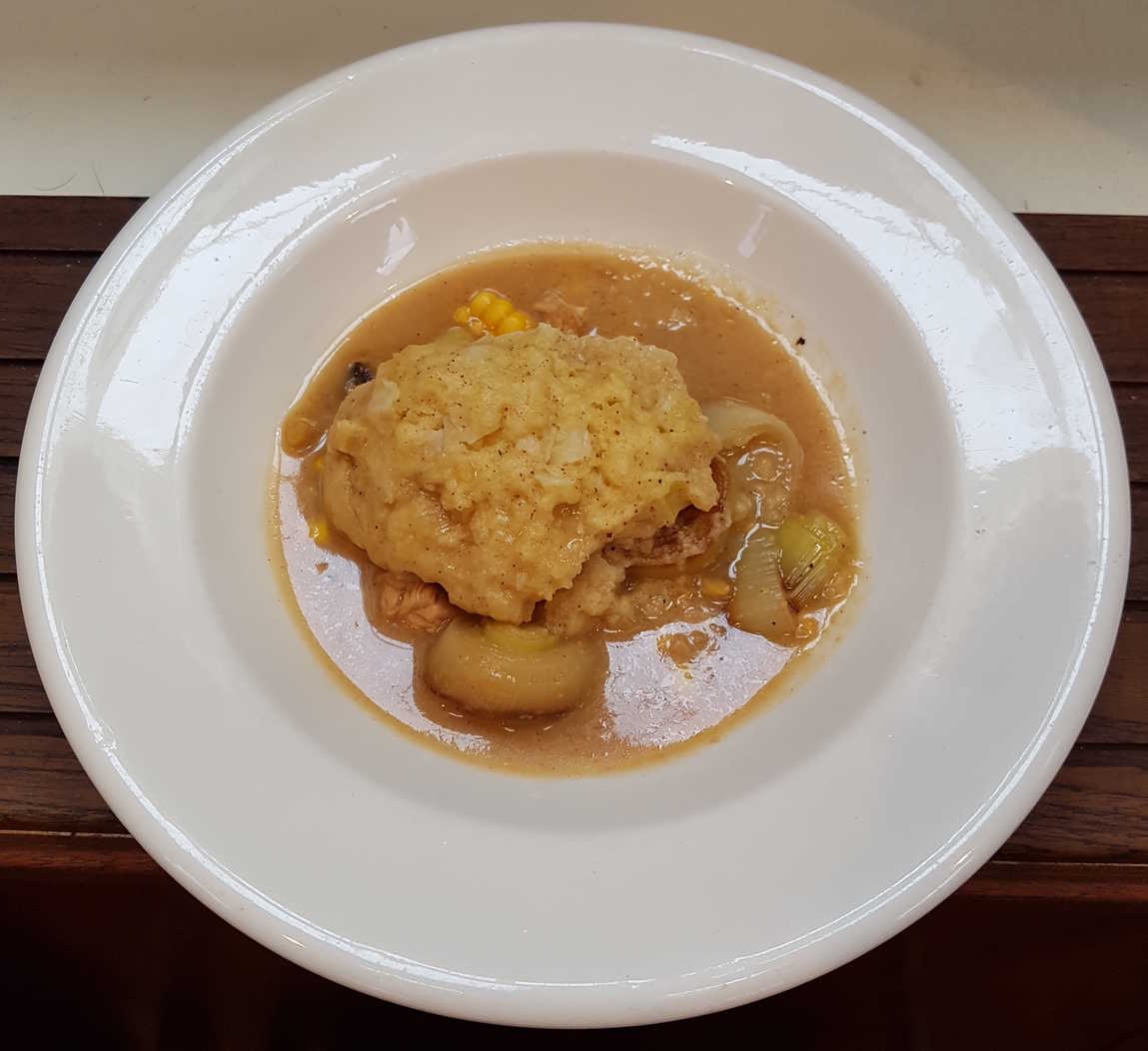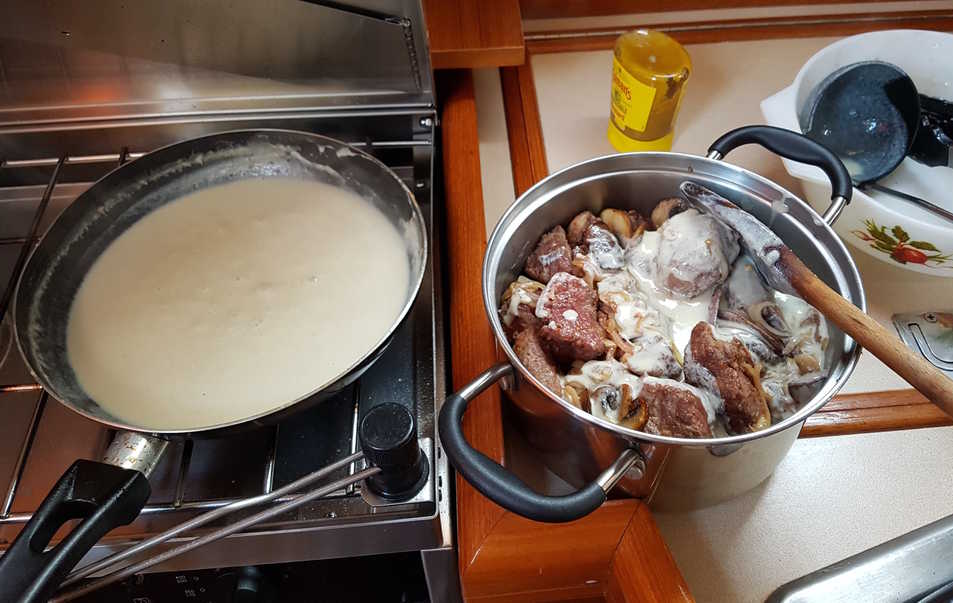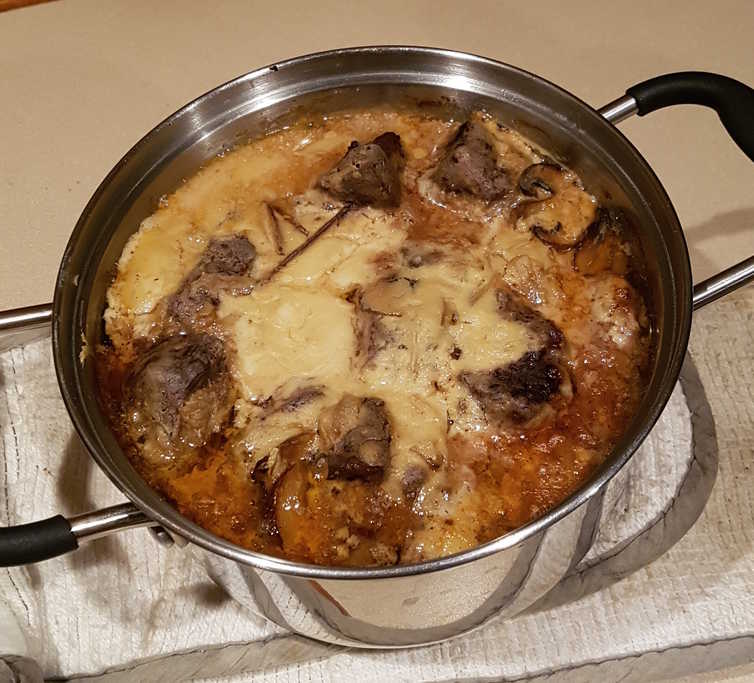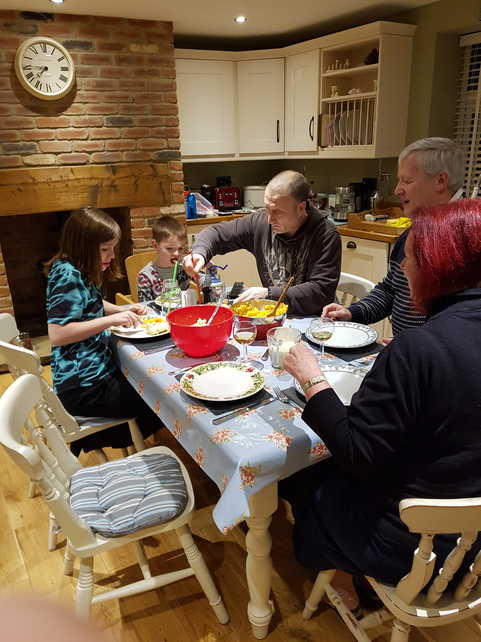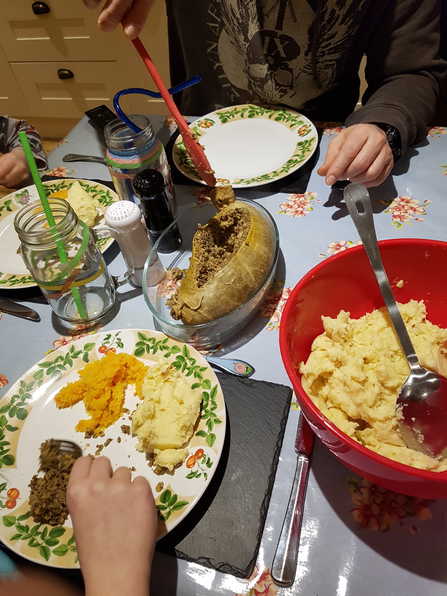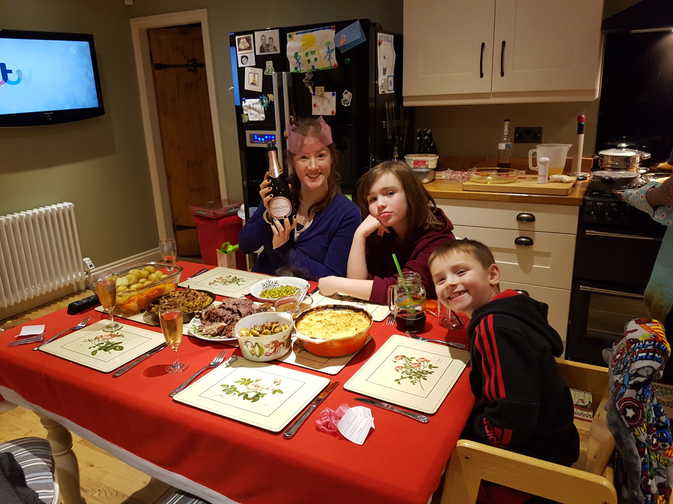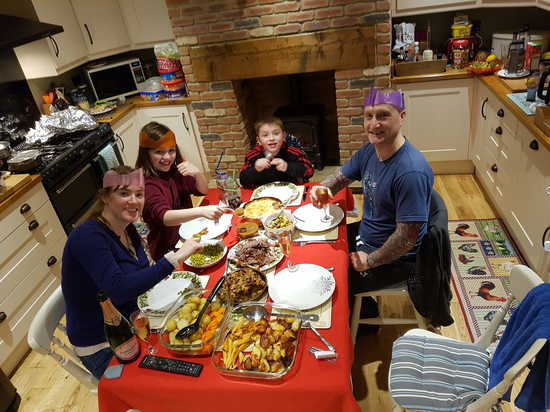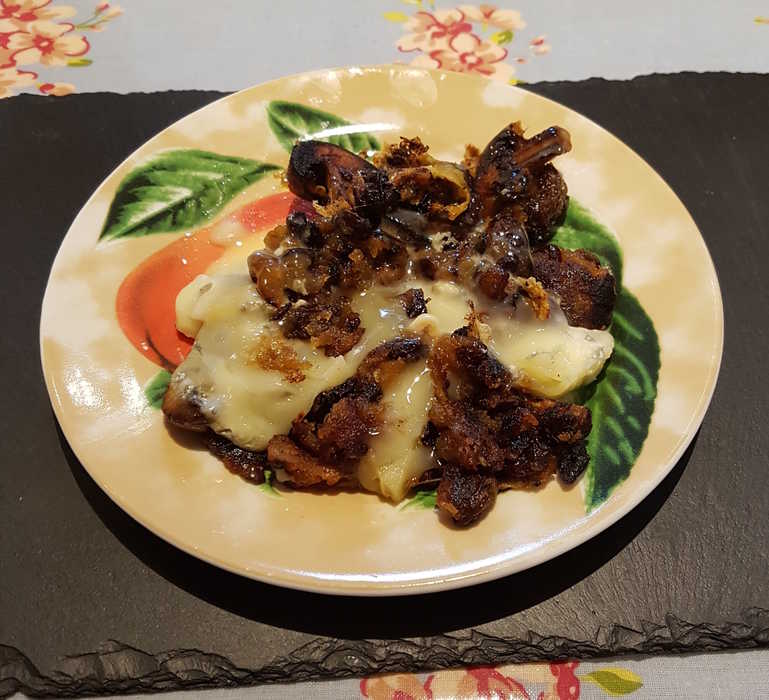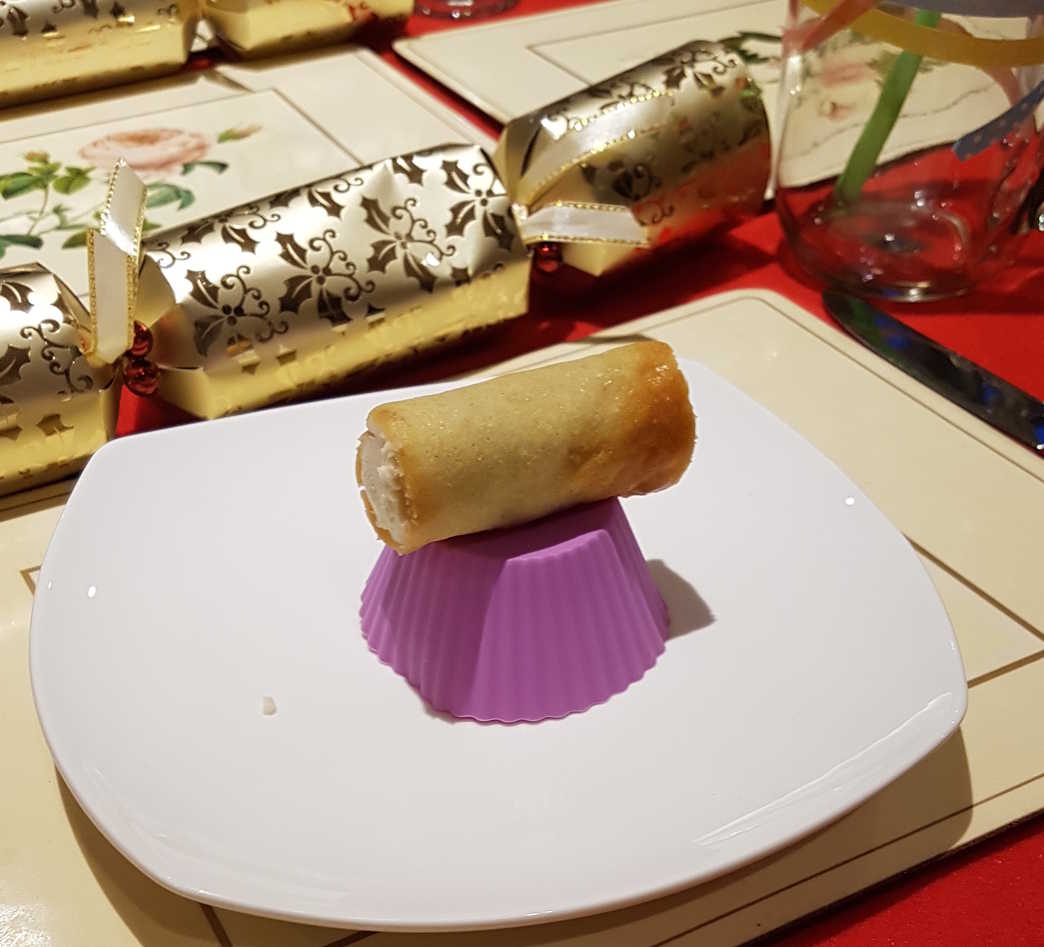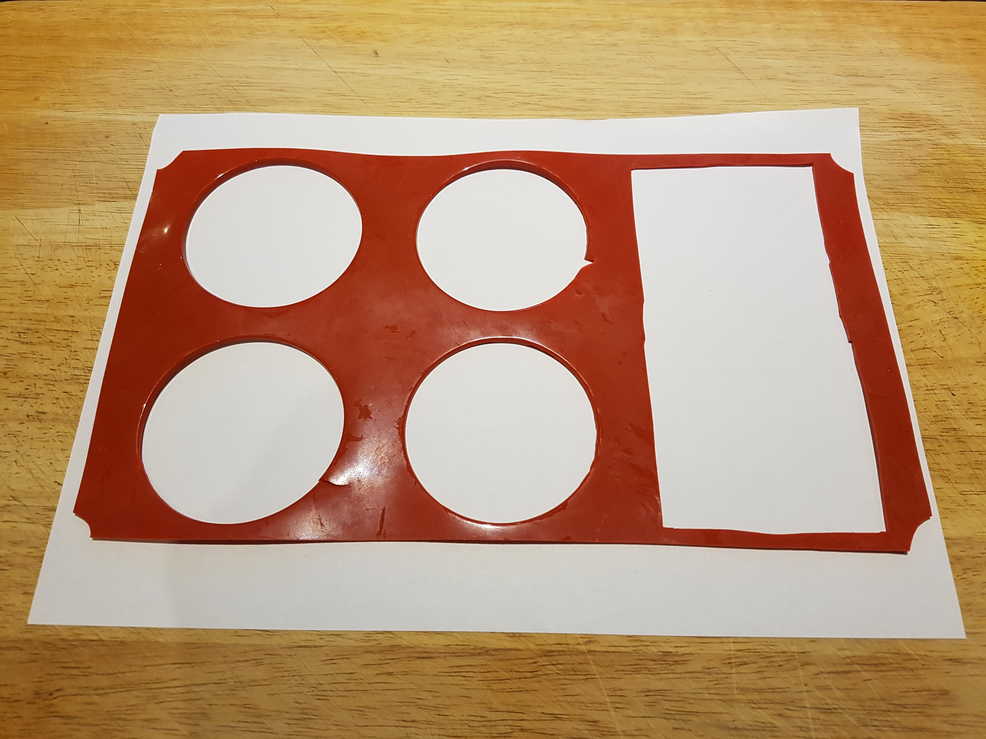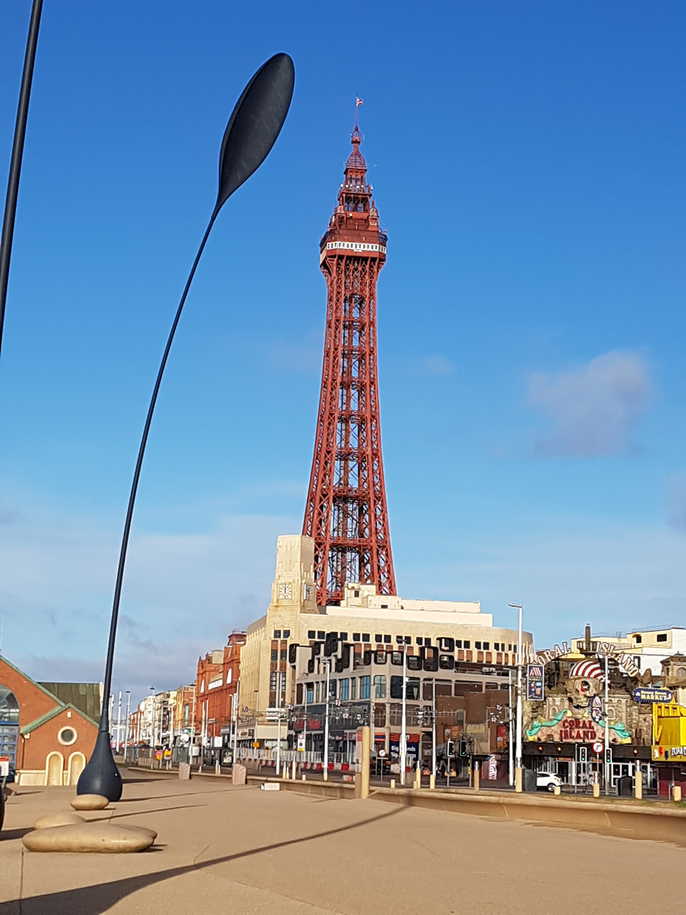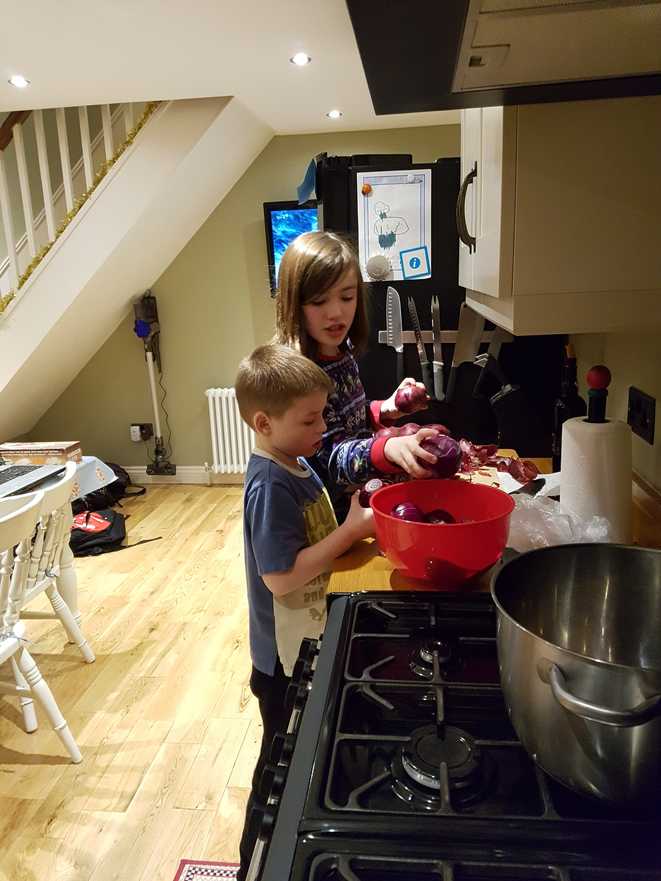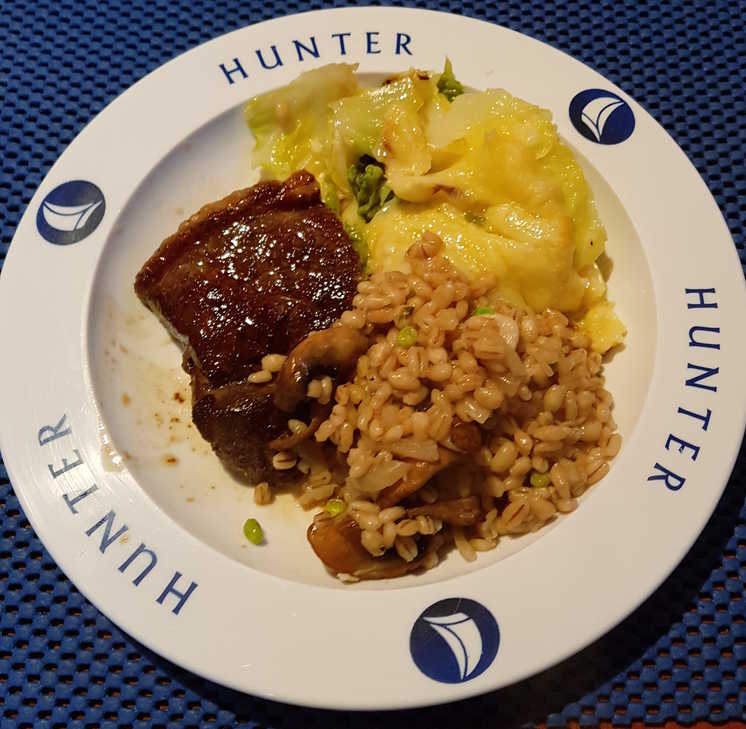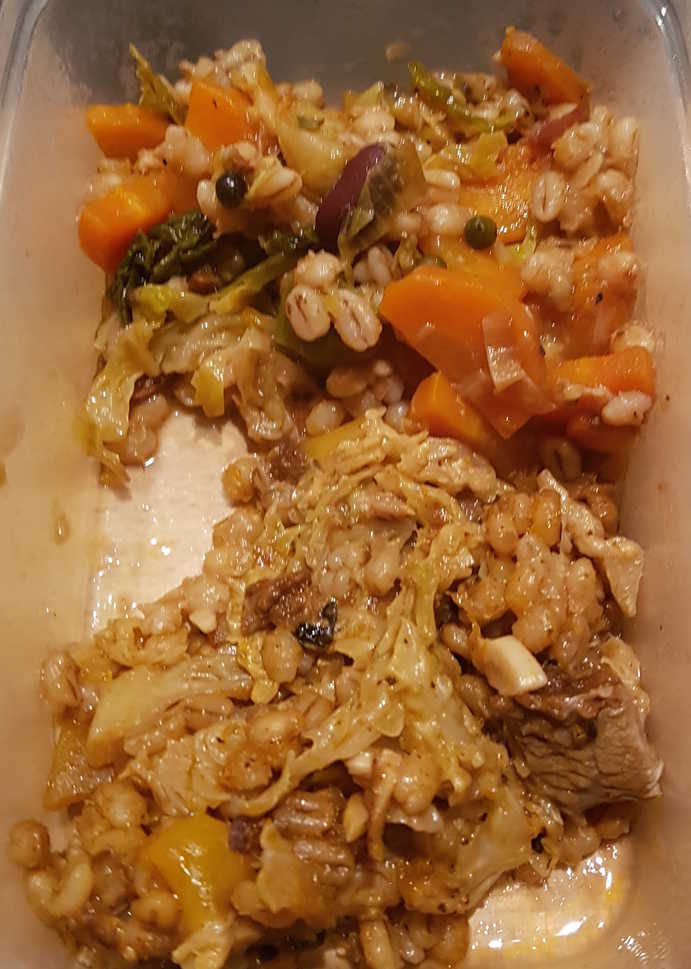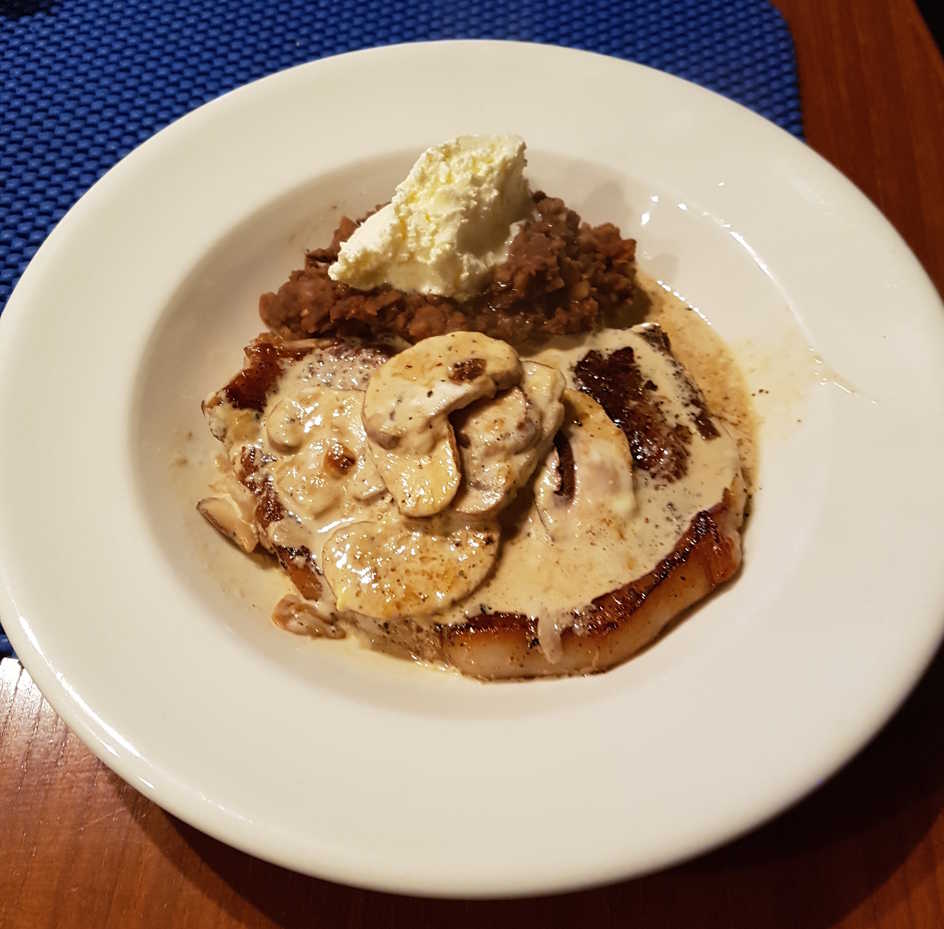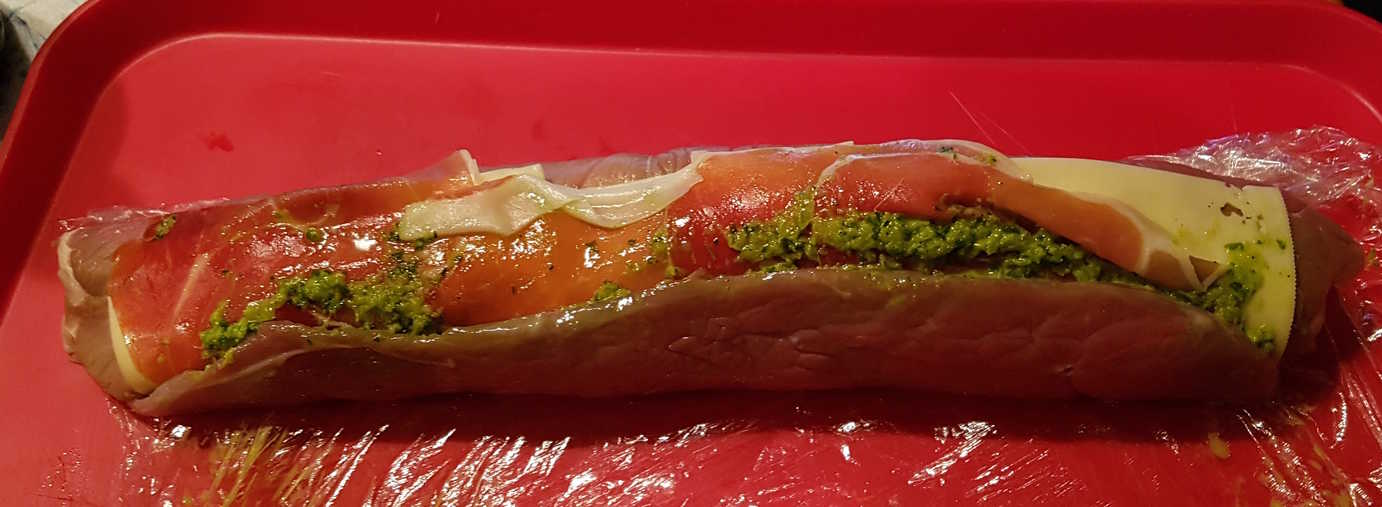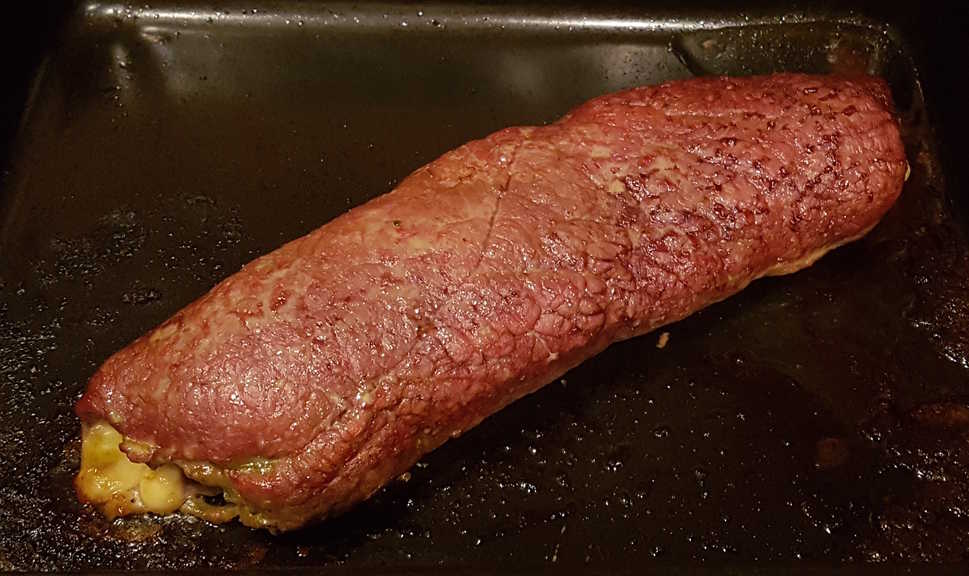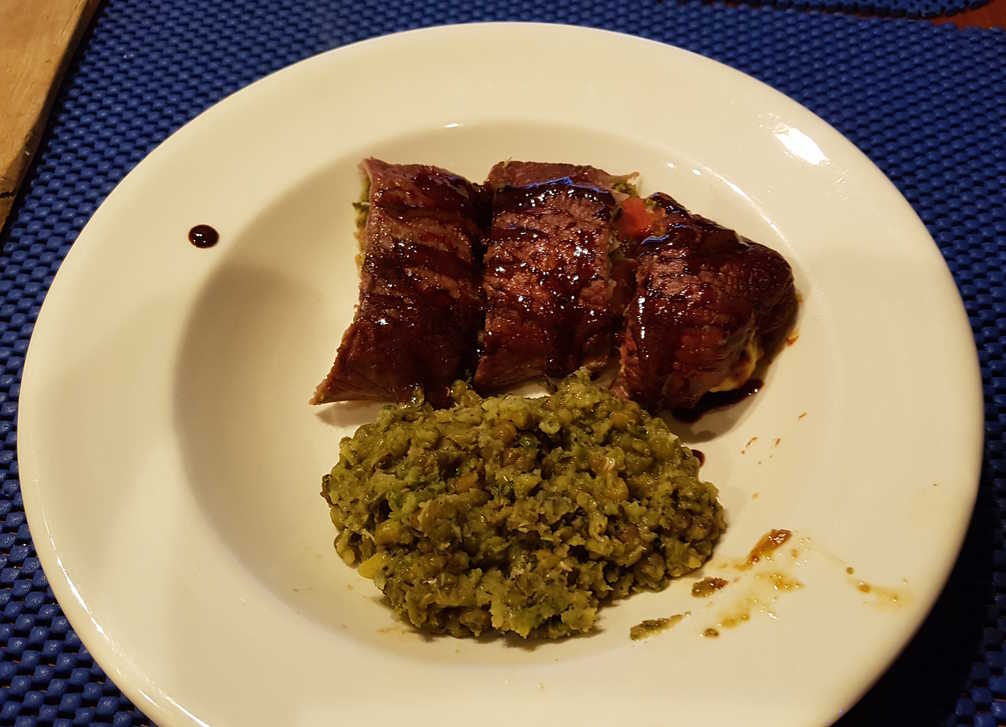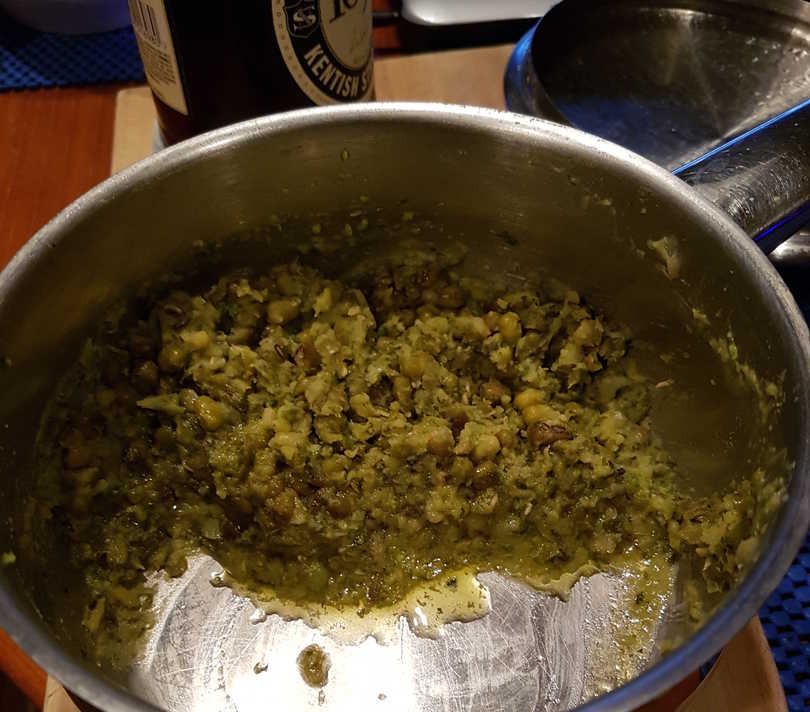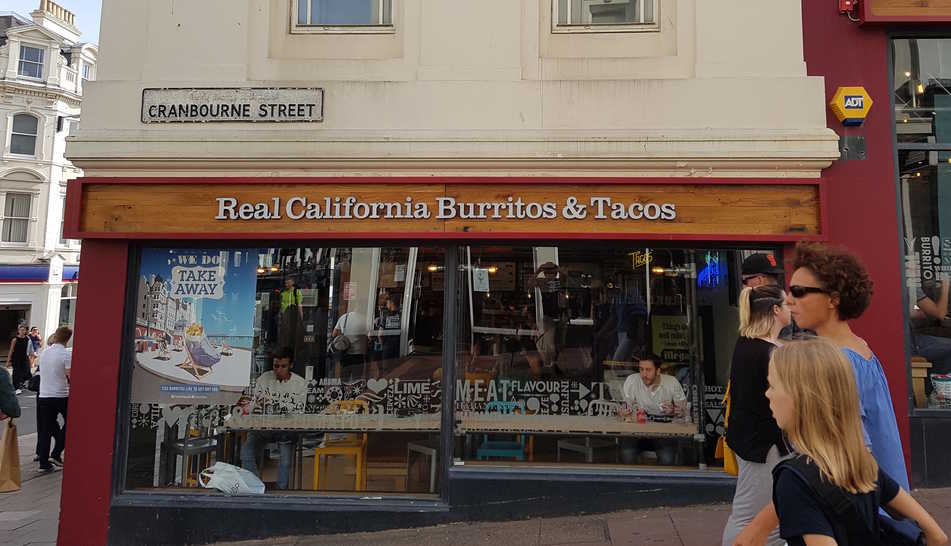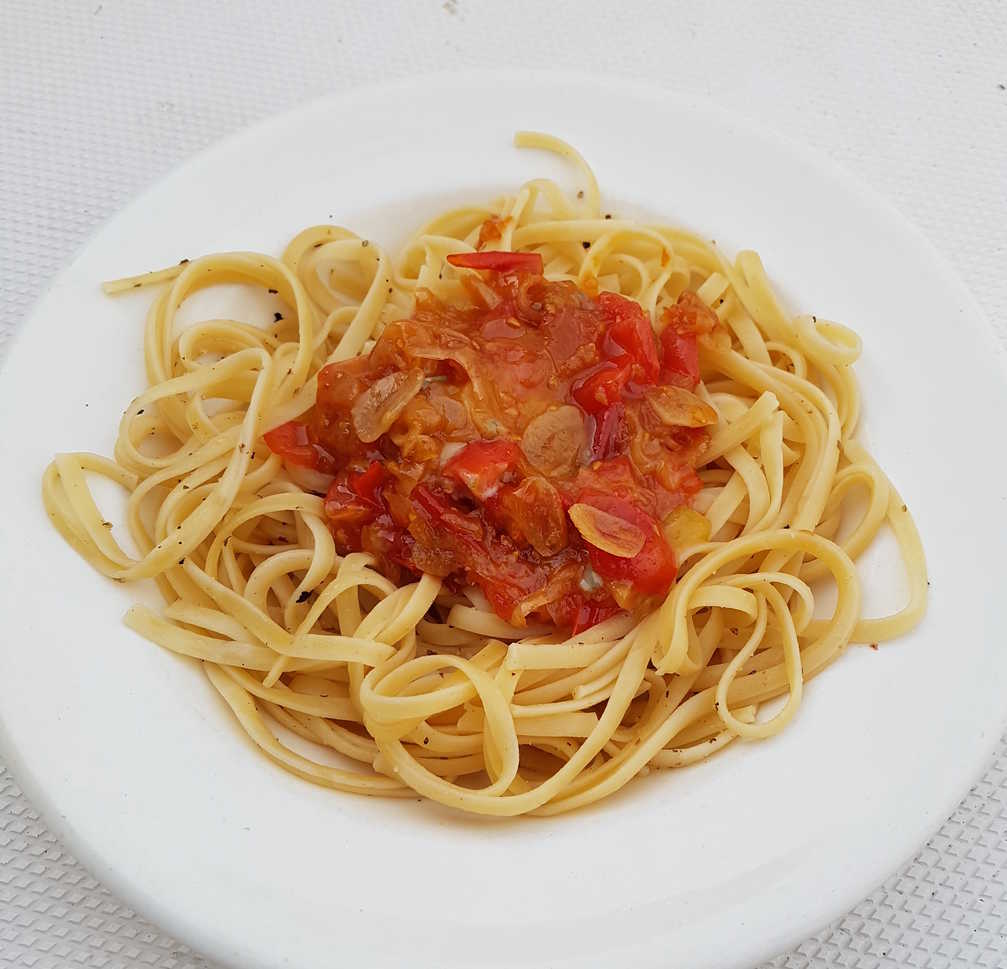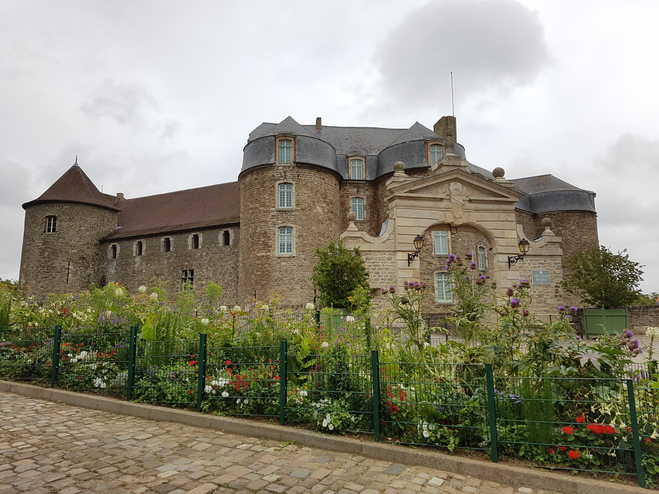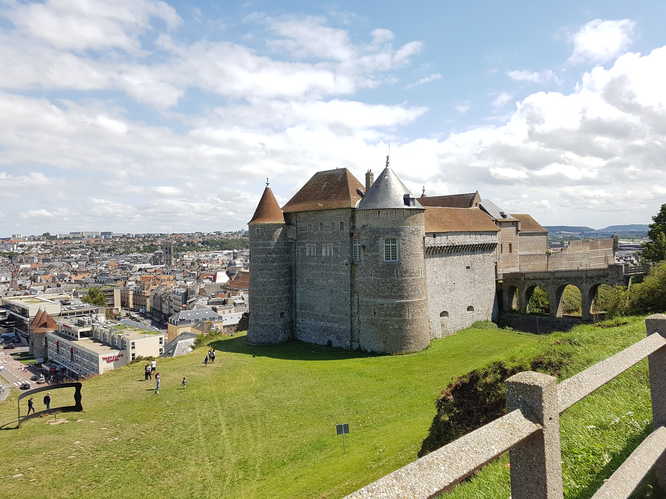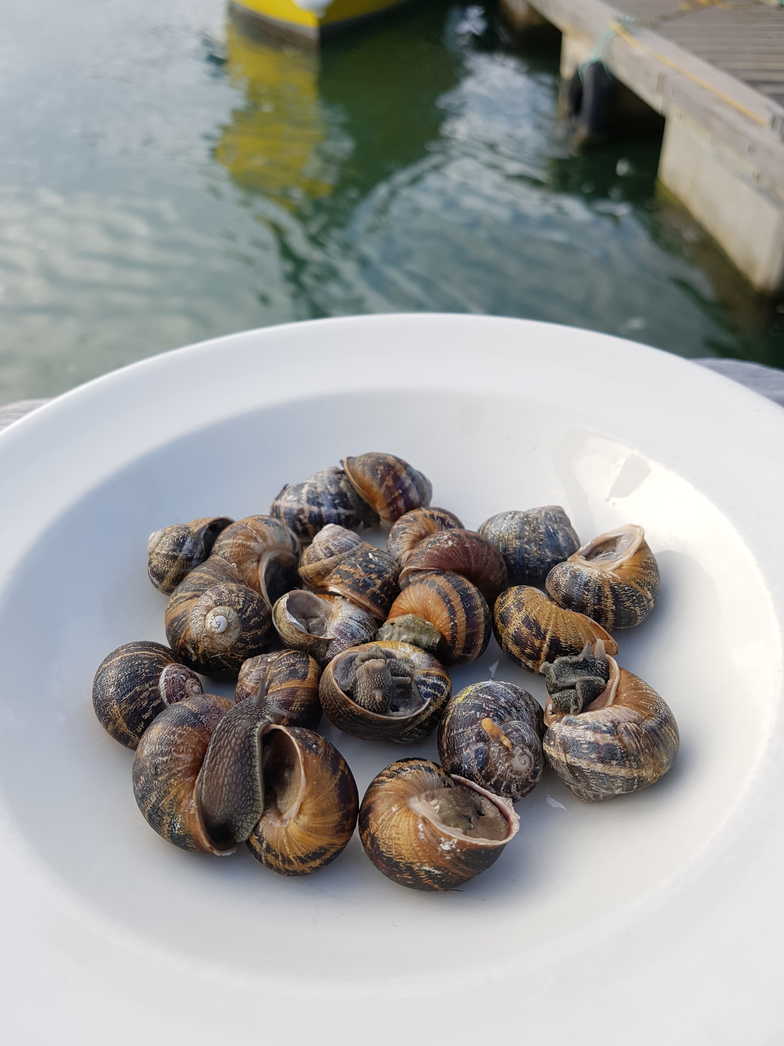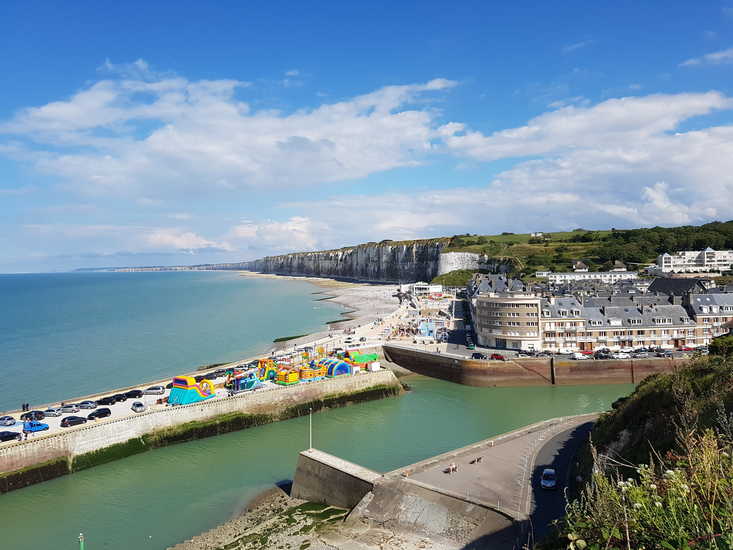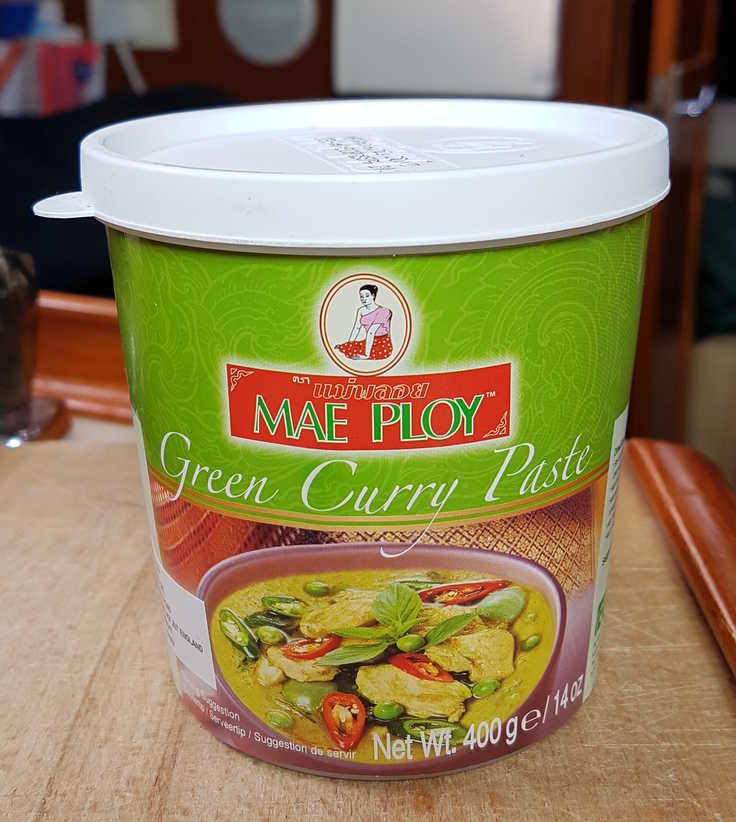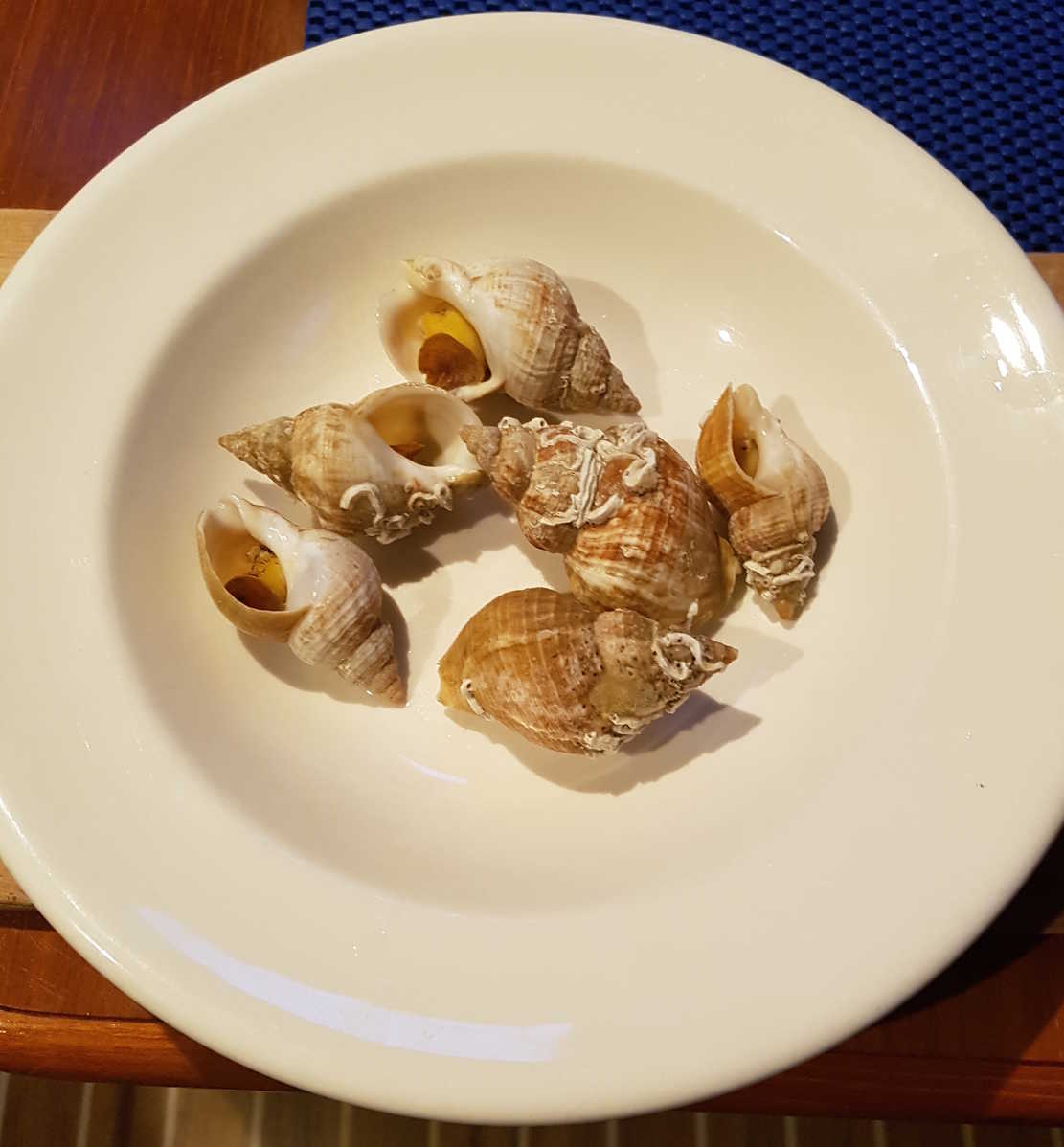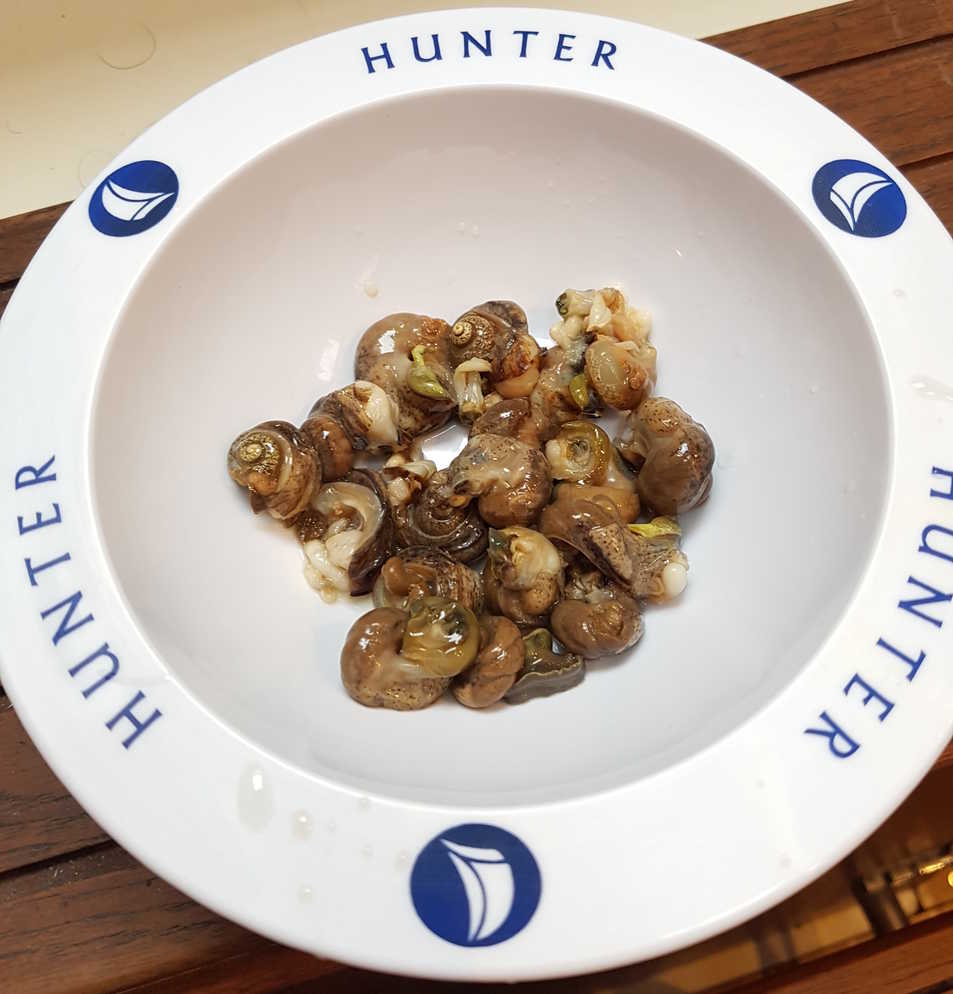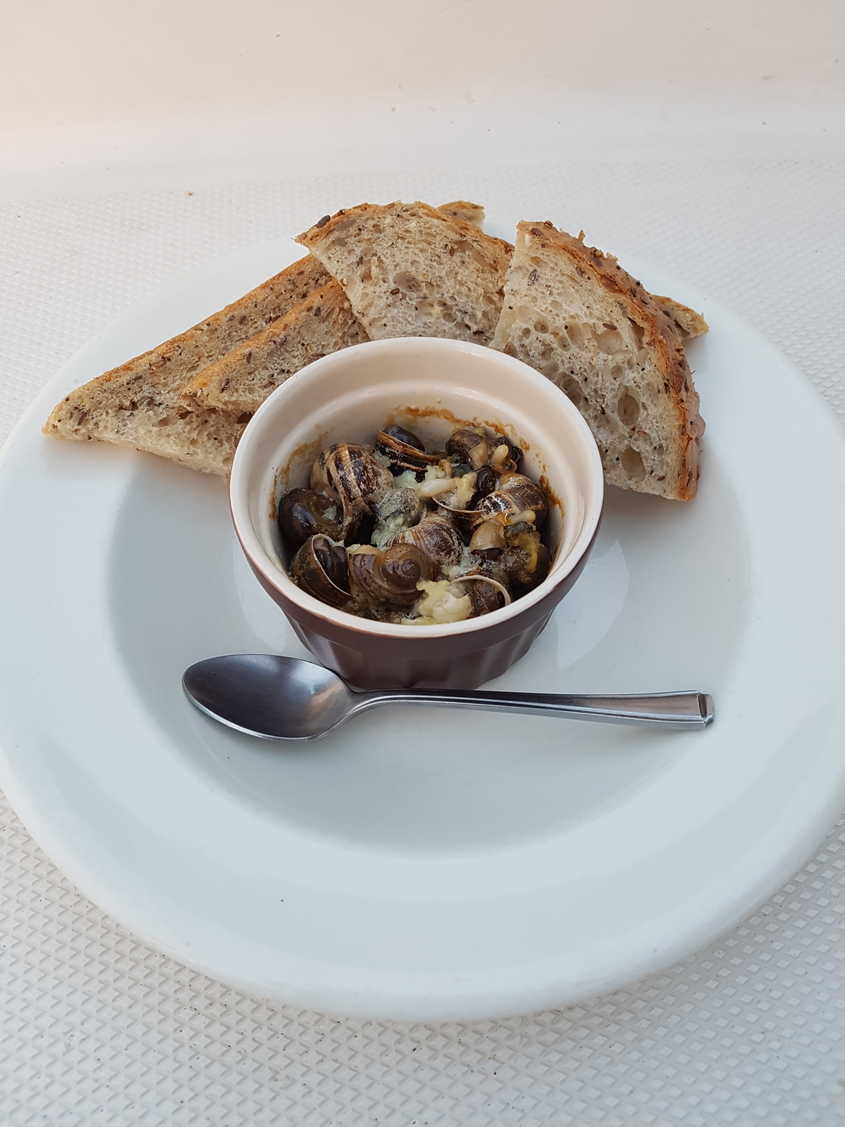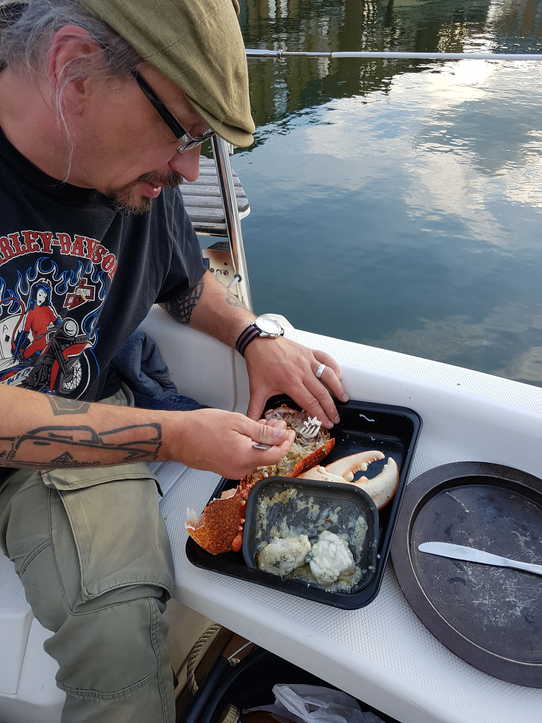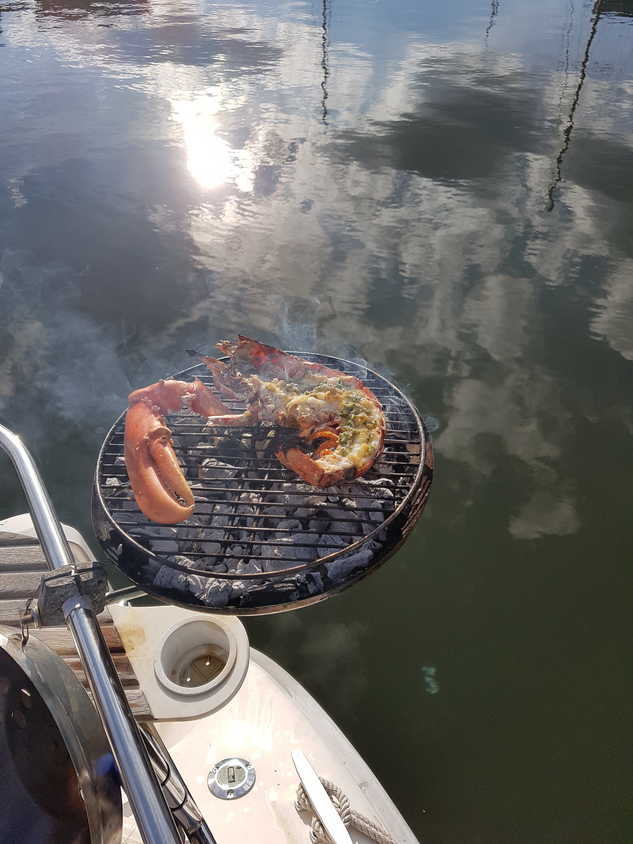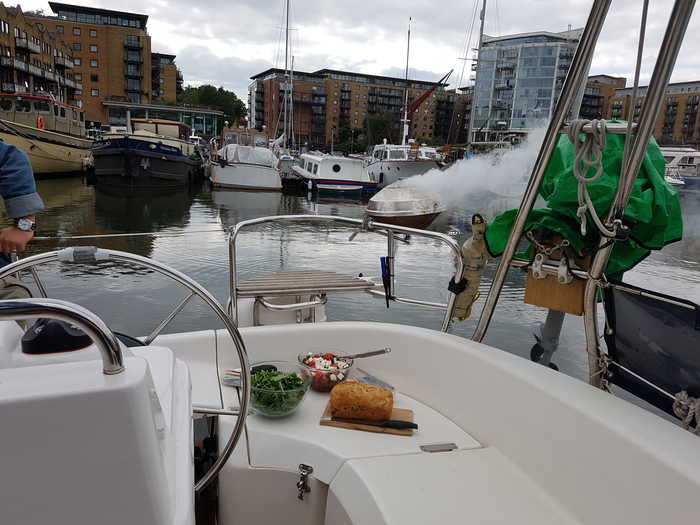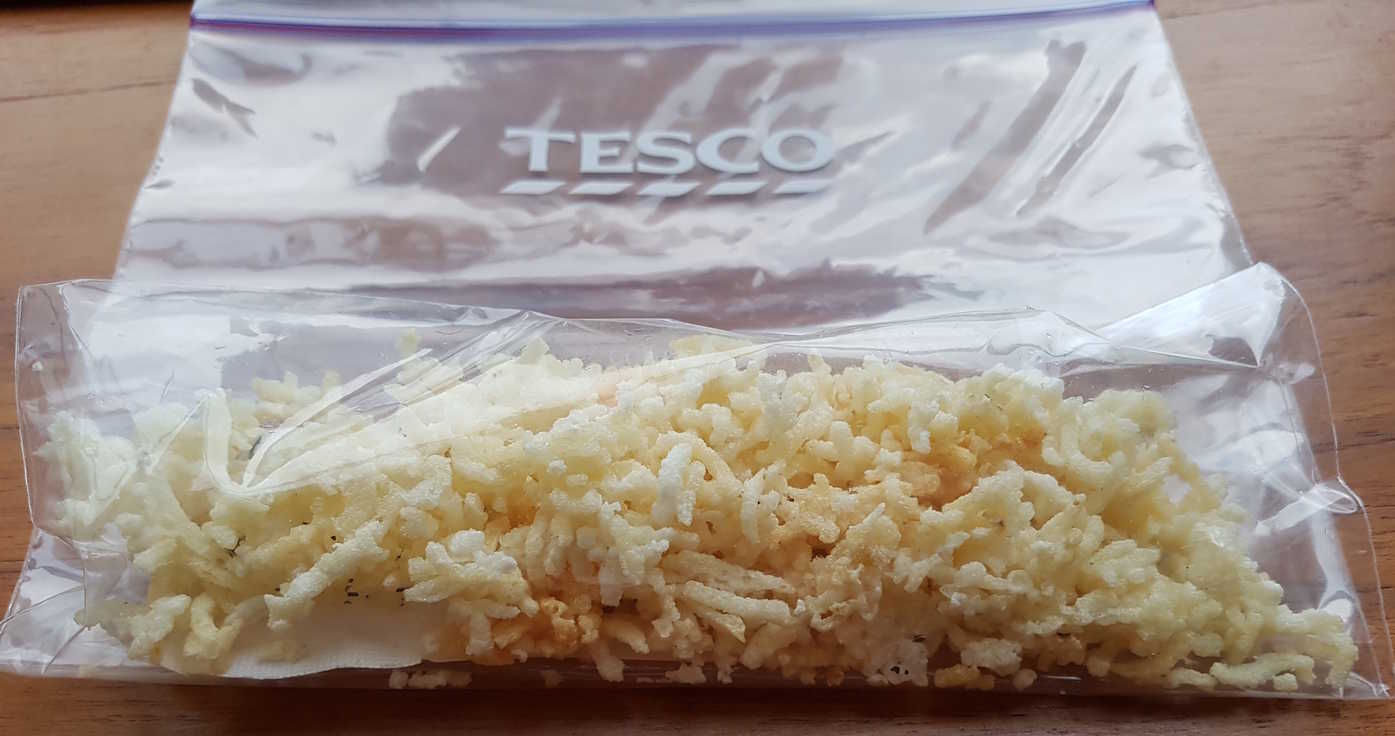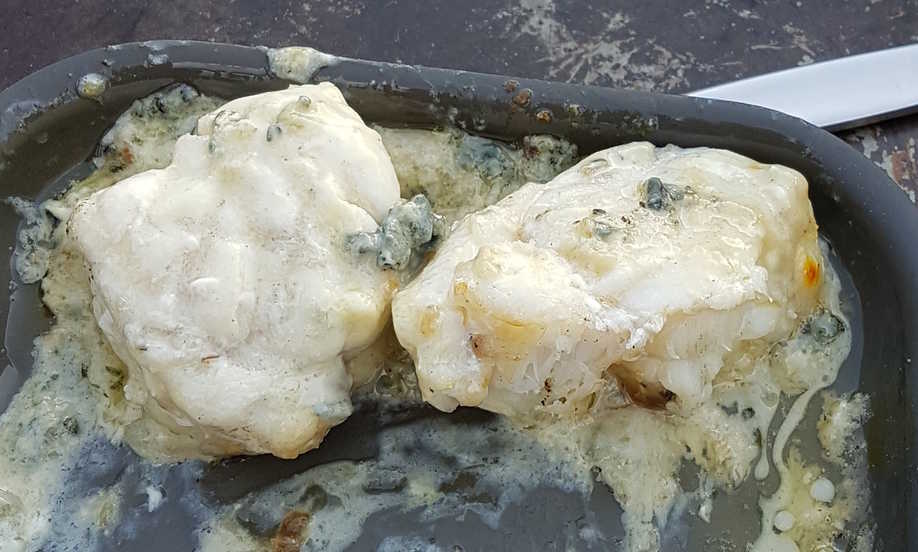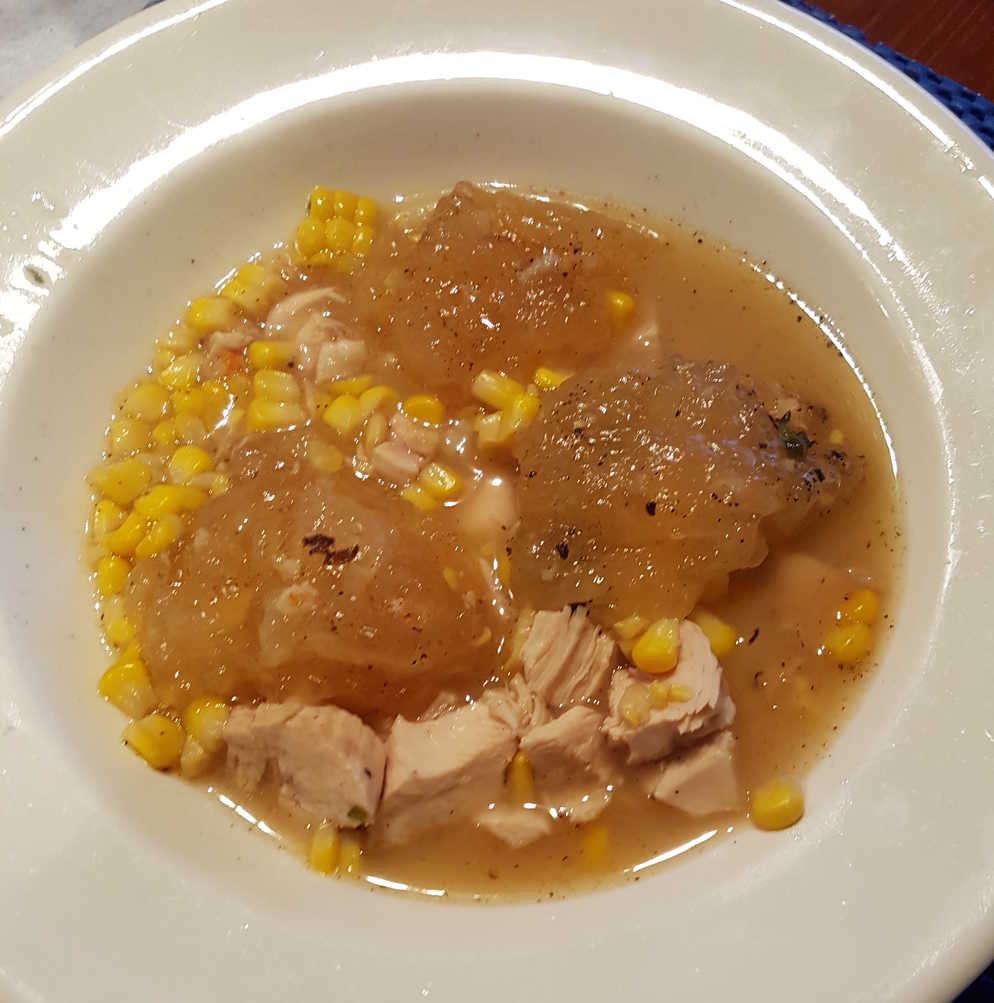
CNN denounces "illiterate uppity nigger" for visiting the Big House.

Over the weekend CNN lectured the American nation on how going up to the Big House and speaking on issues affecting black people was exclusively their and the Democratic Party's job and branded popular hipper hopper Kanye West an "illiterate nigger" for daring to usurp their role.
A black body and brain are the warehouse for the articulation and expression of anti-black cinnamints that have been chin-checked by people with far more rigorous credentials reasoned incoherent race-baiter Michael Eric Dyson before going on to urge the burning of crosses on white supremacist Kanye's lawn to impress upon him the error of his ways.
More food at ten...
Comments (0)
Yorkie - It's not for Chocolate Lovers

You know how chocolate is supposed to melt smoothly in your mouth? Well apparently Nestlé don't!
I remember when Yorkies were thick, rich, pleasant chocolatey bars - pretty good value for a quid.
No longer though; following Public Health England's hectoring demands that the UK's food industries reduce the pleasantness of their products by 20% it seems Nestlé have lined up eagerly like a good little collaborator and consequently their chocolate now has an unpleasantly oily taste, and a disturbingly gritty texture rather like the grainy feel of a heroin baby's excrement or anal sex. Good luck getting that image out of your head!
Public Health England's ideology is as simple as it is stupid: that if you make popular food sufficiently horrible, or sufficiently expensive, people will simply stop eating it. These people are fuckwits. The kind of dim bulb, sanctimonious authoritarians who brought prohibition to America (yep, that really worked) and the never-ending drug war to the entire western world.
Yay!
This year I've been working my way around the infinitely fractal coastline of Western Ireland and the above, I'm sad to say, is the depressing reality of grocery shopping here.
As magnificent as the landscape is, the peoplescape appears to be completely aboard the health fascism, low-fat, non-alcoholic, meat-free-gravy train.
This is Ireland for fuck's sake.
Land of milk and Guinness no more.
It's now impossible buy a bottle of wine for less than €7, their beer costs twice the price in England (and their Guinness really isn't that much better) and hunting down full-fat cream, yoghurt or meat a continual battle. Never have I been less impressed with a country's food culture: I expected to enjoy coastal village shops bursting with locally made produce only to find butchers selling only commercially produced packets of sausages or bacon identical to those in the bloody supermarkets™, greengrocers whose wares seemed to consist solely of plastic bags of potatoes, onions and over-priced cabbage, and fishmongers absolutely nowhere to be found (which given the overwhelming number of lobster pots to be avoided is simply incomprehensible).
In fact Ireland's only decent neighbourhood vendor is the bakery, which every town and village still boasts and which do in fact produce some fine local bread and cakes.
I'd blame the EU, except that I've been to France. Which really leaves no-one to blame but the Irish themselves.
What a disappointment.
In the meantime out of culinary nostalgia (and comestible necessity) I've been mostly cooking with dumplings...
Tapioca Flour Dumplings
side ingredient fish
Nope.
Just nope.
I thought I might use tapioca flour and chopped prawns to make some half-decent dumplings to go with an oriental-style chicken and sweetcorn soup.
But nope.
The dumplings come out like a cross between glue and a particularly flavourless chewing gum, though I think I made them from pure tapioca flour, with no wheat flour, which might not have helped.
Just nope.
I thought I might use tapioca flour and chopped prawns to make some half-decent dumplings to go with an oriental-style chicken and sweetcorn soup.
But nope.
The dumplings come out like a cross between glue and a particularly flavourless chewing gum, though I think I made them from pure tapioca flour, with no wheat flour, which might not have helped.
Ingredients
- tapioca flour
- regular flour
- water
- fat
- some prawns, probably chopped
Look, you're not going to make this 'cos it sucks,
but if you were you would mix flour and tapioca flour (up to 50/50?) with some chopped prawns, some fat (I think I used sunflower oil),
and cut in enough water to make a dough,
form into balls and drop in your soup. Or the bin.
Yeuch!
Chickpea Flour Dumplings
side ingredient veg
Some more dumplings you probably don't want to add to your stewed beef in milk.
But they do go well with a chicken, leek and sweetcorn soup,
and at least these are tastier than the tapioca dumplings.
Really tastier!
Really tastier!
Makes about a half dozen dumplings.
Ingredients
- 75g shredded suet
- 100g chickpea flour
- 50g white wheat flour
- 2½ tsps baking powder
- herbs, chopped (coriander is good)
- chopped leeks or spring onions also work
- a dash of ground allspice
- salt & pepper
- cold water
Mix all the ingredients together in a large bowl, then gradually dribble in cold water, cutting in with a knife,
until the mixture clumps up and holds together. Form into balls with a couple of tablespoons and drop into a soup or stew.
Cover and cook for 20 minutes until risen (fluffy, if you're lucky) and cooked through.
These chickpea dumplings are edible but really very dense.
They might be improved by making the mixture a lot more runny, rather than as for the more usual dumpling recipe above.
Oh, and remembering to add the baking powder.
Oh, and remembering to add the baking powder.
Yep, I made these again, but I didn't have any suet so I just added enough peanut oil to the dry mixture to get it to start to clump a little.
I also remembered the baking powder, and used more water so the mixture was like a thick, gloopy, wallpaper paste.
The result was much better - light and fluffy dumplings.
So there!
The result was much better - light and fluffy dumplings.
So there!
Milk Braised Beef Casserole
main meat stew crockpot
I've had a go at stewing beef in milk before, with sickening results,
so I thought I'd just keep going.
After all, it does seem like the height of gastronomic irony - cooking a cow in its own juice.
After all, it does seem like the height of gastronomic irony - cooking a cow in its own juice.
Serves 4
Ingredients
- 2 tblsps flour
- 2 teaspoons mustard powder
- 1 teaspoon salt
- 1 teaspoon ground pepper
- olive oil for frying
- 2 lb/1kg stewing beef of some kind
- 1 yellow onion
- 8 oz/250g mushrooms I used chestnut
- 1 stick cassia
- 2 pints/1 litre milk
- 1½ tblsps flour
- 1½ tblsps butter
- mustard
- salt & pepper
Preheat the oven to Gas Mark ½/120°C.
Cut the beef into 1½" cubes, put in a plastic bag with a couple of tablespoons of seasoned flour and mustard powder. Shake to coat, heat olive oil in a frying pan and brown the pieces in batches decanting to a casserole dish as you go.
Refresh the olive oil in the frying pan, fry the cassia bark until it sizzles, thinly slice an onion and fry until soft, but not too browned. Add everything to the casserole.
Clean and thickly slice the mushrooms and fry, in batches if necessary, in the freshly (and generously) oiled frying pan until golden.
Add to the casserole dish.
Fry about 2 tblsps flour in the same volume of butter in a small pan (though you can re-use the frying pan) until it smells biscuity. Gradually add the milk, whisking, to make a thin white sauce. Whisk in the meat juices from the casserole dish too. Season and add a teaspoon or two of mustard to taste (as you like), then pour into the casserole dish to cover the meat.
Cover and cook in a very low oven for 2 hours, then uncovered for another hour.
Serve with mashed potatoes or pasta, and a nice cavolo nero. Or possibly a different cavolo nero
Cut the beef into 1½" cubes, put in a plastic bag with a couple of tablespoons of seasoned flour and mustard powder. Shake to coat, heat olive oil in a frying pan and brown the pieces in batches decanting to a casserole dish as you go.
Refresh the olive oil in the frying pan, fry the cassia bark until it sizzles, thinly slice an onion and fry until soft, but not too browned. Add everything to the casserole.
Clean and thickly slice the mushrooms and fry, in batches if necessary, in the freshly (and generously) oiled frying pan until golden.
Add to the casserole dish.
Fry about 2 tblsps flour in the same volume of butter in a small pan (though you can re-use the frying pan) until it smells biscuity. Gradually add the milk, whisking, to make a thin white sauce. Whisk in the meat juices from the casserole dish too. Season and add a teaspoon or two of mustard to taste (as you like), then pour into the casserole dish to cover the meat.
Cover and cook in a very low oven for 2 hours, then uncovered for another hour.
Serve with mashed potatoes or pasta, and a nice cavolo nero. Or possibly a different cavolo nero
OK, so waaaay better than my first attempt
- at least the white sauce didn't curdle up the way the milk on its own did, and became actually quite delicious.
But still the beef was a little on the tough side, it would have been better cooked for longer, or a perhaps using a more tender cut of steak?
I'd have added some potato too, but the casserole was too small. It might have worked.
But still the beef was a little on the tough side, it would have been better cooked for longer, or a perhaps using a more tender cut of steak?
I'd have added some potato too, but the casserole was too small. It might have worked.
Though you technically can add dumplings to this stew, I wouldn't. They don't really go.
Cavolo Nero with Onion Seeds
veg vegan side
A vaguely Indian-inspired side dish that goes with any kind of British food.
Serves 4
Ingredients
- 300g cavolo nero kale, stalks removed, sliced
- olive oil
- 3-4 tsps onion seeds (nigella)
- 1 onion, thinly sliced
- salt
Heat olive oil in a large pan and fry about 3 tsps onion seeds until they sizzle and release their odour.
Add a thinly sliced onion and fry until just starting to soften.
Cut any thick stalks away from the kale, slice, and add to the pan. Keep moving while the kale fries and collapses,
then cook gently until tender (you may need to cover).
Season and serve.
Season and serve.
Eating for Easter

It's that time of the year when we religiously gobble the lamb of God in celebration of his sacrifice. And who am I to offend against tradition.
So I bought a leg of lamb (on offer at my Local Fucking Supermarket™) to share with two other lonely skippers from neighbouring boats (that's one of the lonely skippers lovely wooden boat above).
The other dishes were somewhat ad-hoc from the stuff I had aboard that needed eating. I got rid of some more boat beans, threw a few wilting celery stalks in with the cauliflower, and flavoured a bag of rapidly softening carrots with dried apricots leftover from a nice roast pork I once cooked for Kurt.
The meal was at least tasty enough to make one of those lonely skipper's absent girlfriend jealous. So that's a bonus :)
I recently spent some painful time listening to Sam Harris attempt a conversation with Ezra Klein on one of Sam's podcasts
(Published April 9th, 2018).
A quick bit of background - Sam previously recorded a podcast with controversial political scientist Charles Murray, author of The Bell Curve, to discuss the current state of the science of IQ, how this reflects on claims made in the Bell Curve and how Murray became a social pariah.
It's quite good and worth a listen.
Subsequent to that, a series of articles on Vox by the usual ratbag of disgruntled, race-baiting psychologists outraged at finding someone who disagrees with them given (moderately) respectable air time. They (re-)accused Murray of peddling junk science and even went so far as to pen the hilariously un-self-aware passage We are absolute supporters of free speech in general and an open marketplace of ideas on campus in particular, but...!
You can guess the rest.
After some behind the scenes tom-twittery it seems Ezra felt the need to pen his own long and rambling diatribe on the topic in which he mostly seems to be complaining that the entire history of slavery and oppression, ancient to modern, was given insufficient prominence in the podcast about IQ.
And so Sam and Ezra get to air their differences together.
Now just to be clear I happen to think that Sam Harris is a generally thin-skinned, insufferable, tedious and dogmatic windbag who is nowhere near as clever as he thinks he is, and find his pathological inability to make a simple point succinctly bores the pants of me very quickly. But I was generally predisposed to his defence in this discussion having myself read The Bell Curve and found nothing racially offensive in it.
A quick partisan summary of the final round then;
Sam Harris repeatedly attempts to make the point that it ought to be possible to talk about the science and data of IQ independently of the personality, personal politics or the social policies which Charles Murray might or might not espouse consequent to them.
Ezra Klein continually deflects this assertion with demands that any discussion touching or involving race should be accompanied by an obligatory lecture in the entire history of slavery, ancient to modern.
After hearing them verbally circling and talking past each other for two hours I felt compelled to conjure forth my intellectual tuppence in the form of two mild caricatures of Sam and Ezra called Saul and Esau:
Someone like Saul sees a black person and thinks Oh look, a human being. Let's go and bore the shit out of them.
Someone like Esau sees a black person and thinks Oh look, a victim of discrimination, slavery and oppression. Let's go and support the shit out of them.
Saul thinks that he's not a racist because he doesn't imbue every individual black person he meets with the racial characteristics that may be ascribed to their group.
Saul thinks that Esau is probably a racist because Esau is predominantly concerned with the racial group identity of every individual he meets.
(We could note here that one of the things Ezra did in preparation for his discussion with Sam was to obsessively count the number of black people Sam has guested on his podcasts.)
Esau thinks that he's not a racist because he sees the deep injustice and racism inherent in the world, and thus each black person as he truly is - victimised and oppressed.
I suspect that Esau regards Saul as being the next best thing to a racist.
Esau thinks that Saul is a racism-denier because Saul denies an assumed victimhood of individual black people.
For Esau, denying or failing to place The Black People™'s oppressive racial inheritance at the centre of any black person' identity is a borderline racist act.
(Although Ezra does deny that he considers Sam to be a racist, at one point in the podcast he also condemns Sam for being an anti-anti-racist.
[59:42].)
Saul thinks that Esau is an identitarian because Esau only views a black person as a member of The Black People™ tribe. Not as an individual.
Esau does not really see a black person separately from his membership of The Black People™, because for him every black person is a personal embodiment of the entire history of the racial oppression of The Black People™.
Esau genuinely sees the world through this racialist microscope. He simply experiences existence as one seeped in racism. Infused with racism. Racism is the inescapable and inseparable reality of his universe.
In the words of living feminist trope Anita Sarkeesian
... when you start learning about systems, everything is sexist, everything is racist, everything is homophobic, and you have to point it all out to everyone all the time.
and in Ezra's own words:
Esau doesn't see himself as indulging in social justice warriorhood because for him he isn't imposing his racialist interpretation onto the world.
The world simply is racist.
Therefore for Esau this means that anyone who doesn't see this truth is a deluded, self-deceiving denier of reality.
And probably a racist white supremacist to boot.You [Sam Harris] see, you know, on my part a social justice warrior tribalism of some sort or another someone who is, you know, looking for evidence of racism and bigotry.
I look at our society and I see a society that even now on every study we basically run shows huge, huge, huge racial bias.
[2:04:15]
For Esau it is Saul who is the tribalist, because it is Saul who belongs to a group bent on twisting and denying reality. And more than that, he doesn't regard not seeing the racism in everything as a legitimate standpoint.
I suspect that Ezra really doesn't understand Sam's term identity politics, because for him the identity of an individual genuinely isn't separable from their existence as a member of a group. He thinks that Sam must be himself playing identity politics, or being tribalist because it is obvious to him that Sam belongs to the tribe of The White People™ and for him that naturally defines Sam's identity. Indeed, at one point in the podcast he characterises Sam's own identity politics as coming from one of Sam's internal identities. As though he understands the term identity politics to refer to the policies of an internal identity to which one feels one belongs, not the act of imposing on others the identity to which one feels they ought to belong.
I was recently reminded of a revealing (and hilarious) 2017 video by Ami Horowitz supposedly reporting on a White Privilege Conference in Kansas City, Missouri in which the attendees he interviews enthusiastically agree that it is wrong to judge people collectively whilst simultaneously, and entirely un-ironically stating on camera that ... it is fair to say that all white people are racist.
This sounds like laughable cognitive dissonance to many, including me, but I think that for the truly wokeit isn't.
They are genuinely not able to separate their beliefs about groups from their beliefs about the nature of individuals.
To the woke identitarian the fact that white people are racist isn't a fact about their group at all. It's simply a statement about the nature of every white person, a statement about the nature of their existence.
And so to the podcast's charged question of the genetic, or at least inheritable, component of the IQ of identifiable groups. Say the IQ of black Americans, or the IQ of white Americans:
For Sam the question of to what extent IQ is genetic, or biologically inheritable is an empirical question that could in principle be investigated and determined independently from the question of the mechanisms by which past and ongoing racism might affect modern day group IQ.
The heritability (or not) of IQ is a different issue than the environmental, or even potential biological, effects of racism on IQ.
For Ezra I think these issues are actually inseparable. For Ezra it isn't possible to, as Sam describes it, honestly discuss data[12:15]
I'm unsure whether he thinks that this is simply impossible on a purely practical level - due to the counfounding effects of multi-generational slavery, segregation and discrimination on any study, or whether he thinks that there is something intrinsically, theoretically, impossible about separating these issues - making the very question meaningless?
I'm inclined to the latter given Ezra's avoidance of directly answering Sam's question on this point, and his repeated insistence on detouring his responses back into a discussion of the entire history of slavery.
Considering Ezra's statement that
I doubt that we have, given the experiment that we have run in this country, given the centuries of slavery and segregation and oppression ... violence ... terror ... trauma .. I absolutely doubt, I truly to the core of my being doubt, that we are at a place where any of us should have confidence saying that the differences we see in individuals now, reflect intrinsic group capacity [1:30:45]
I'm tempted to suppose that what is going through Ezra's mind here is a conviction that the history of oppression of The Black People™
has somehow intruded itself into their very DNA. Their very genetic identity.
That racist victimisation has actually become a part of their being at the very deepest level,
and that that being black is now inseparable, even biologically, from having been oppressed.
For someone who believes this to be true, it is obviously not possible to even discuss the IQ of The Black People™
without considering their oppressive history.It really isn't possible to honestly discuss data.
So finally, where do we go from here?
Sam thought he and Ezra could just discuss these issues like people who see and interpret the world in a fundamentally common way. But of course they don't. Like any meeting of a rationalist and a religionist their talking happened on completely separate planes of reality.
Just as it is impossible to convert a religious believer by logical argument, so it is impossible to rationalise an idealogue from their ideation. They do not see the world in those terms.
As a rationalist it's tempting to assume you must only demonstrate to an idealogue a few internal logical inconsistencies in their idealogical framework and they will recognise their defeat and renounce their faith. But it simply doesn't work that way, because to an idealogue, two rationally inconsistent beliefs can both be simultaneously true.
- It is possible to believe that we must, in the words of Hilary Clinton, listen to The Black People™ talk while simultaneously silencing every black person who's world view doesn't concur with yours.
- It is possible to believe that the word of God instructs us to take an eye for an eye while simultaneously averring that we should turn the other cheek.
- It is possible to believe that being skin-colour-blind is a form of racism.
- It is possible to believe that one shouldn't judge people collectively while simultaneously believing that all white people are racist.
- It is possible for facts to be racist.
Now I've heard Sam Harris expressing his opinion that there is in actuality something factually superior about the rational view of the world, which leads him to think that he can rationally demonstrate this to the unbeliever. Or rather, the believer. But I'm inclined to agree with Jordan Peterson on this.
It's not clear that rationalism is empirically superior to religiosity or identitarianism. They are all coherent and effective views of the world on their own terms, none of which make any sense to any other.
The only empiricism is in the differing real-world outcomes and consequences of these different world views.
And I have no idea where we go from there :(
Cooking With Kurt

Since Christmas I've been living at my brother's place waiting for the bit of snow to melt (who really enjoys having me around and doesn't find it a burden in any way at all) and so I've been doing a lot of cooking for him, and we've even done some cooking together.
I made a surprisingly decent giant Beef Wellington out of an old boot a Local Fucking Supermarket™ rolled roasting joint.
Kurt introduced me to a surprisingly easy way of cooking an oriental-style chicken, probably because he was sick to death of my black bean sauce. During the continuing assault on my onboard bean collection before Christmas I attacked my bag of salted beans and turned out a giant batch of black bean sauce (a few salted beans go a long way). I brought it with me from the boat when I moved in and we've been eating it in various ways ever since :)
Due to our determination to have a very bloody mary Christmas we've also had a gallon of tomato juice to use up. I've bent some of the inevitable slew of post-Christmas curries I've been cooking, like this chicken makhani, to that end, as well as a rather tasty, if massive, traditional suet pudding.
Becky gave me a lovely whale plate for Christmas - it's not as big as a whale, but it's got a big smiley whale face and great edges for keeping food aboard during tossy storms. Kurt filled it for me with roast lamb, Mum's suet pudding and all the roast trimmings.
I used up the last of my frozen Haggii (2015 vintage) on a Burns Supper for Diane and Steve - some local English types.
Steve and I made a concerted effort to clear out my old whiskies in honour of the bard. Kurt's kids were surprisingly happy eating the haggis itself (it probably helped that we told them it was just made of minced lamb), bravely attempted the neeps (mashed with some fried ginger, cointreau and some carrots) but bizarrely baulked at the tatties!
Baked tatties mashed with roast garlic, cream and butter. What's not to like?
Weirdos!
Such A Goose

Finally after all that marmalading, baking and tuiling, Christmas is HERE!
The presents are unwrapped, the stockings are emptied, the liquor miniatures therein have been imbibed, the kids are drunk, and the goose is cooking.
Flora joined us again this year thus making this an unbreakable Christmas tradition (too late now Flora - you can never escape us) and bringing her usual cheesy board, plus some groovy bloody mary vodkas, novelty Christmas recipe ideas, and a surprise collection of leftovers from her school's Christmas party. Kurt and the kids found the oysters particularly challenging. But I enjoyed them - thanks Flora!
Cheeses by Flora:
- Morbier, famously Comté-like cheese with an ash layer in the middle
- Rachel - a goats cheese from Somerset.
Apparently named after a Rachel who was sweet, curvy and slightly nutty.
Well Rachel, two out of three ain't bad, right?? - Moliterno - a raw sheep's milk Pecorino from Sardinia, infused with black truffle after aging
- Murcia al vino (Murcian wine cheese) - a raw goats milk cheese from Murcia in Spain; washed in red wine during maturation
- Apres Soleil - an extremely rich and pleasant hard cows milk cheese matured in Swiss caves where they are regularly bathed in sunlight.
Cheeses by Karl:
- Smelly Ha'peth - a soft blue cow's milk cheese from The Saddleworth Cheese Company in Lancashire, although tarred on its own website with the appelation artisan it's actually not a bad cheese. From a Coronation Street actor anyway.
- Old Amsterdam - a Dutch (as far as I can tell) gouda (though not actually made in Gouda) matured for two years, packed with naturally developed salt crystals and a personal favourite of mine.
- and of course, a gooey slab of Gorgonzola
Stuff we (re-)learned this year:
- We made our usual mistake of trying to time the goose to be cooked at serving time.
We should have allowed an hour resting time (such a large goose will still retain plenty of heat wrapped in foil), meaning we could organise the veg and roasties in the final hour to be perfectly cooked, as opposed to somewhat crispy in our case.
Since our 6kg goose took slightly over 5 hours at Gas Mark 3 we should have started it 6 hours before planning to serve. - No-one likes soggy tuiles starters.
- Good things to do with the inevitable leftover Christmas pud:
- Fry with savouries like bacon, black pudding or mushrooms
- Fry and combine with some of that excess Christmas cheese (Smelly Ha'peth is nice)
Tuiles Stuffed with Goat's Cheese Fondant and Red Onion Marmalade
starter veg cheese
Are these rolled wafer cigars tuiles or is the term tuile reserved for those pringle-shapes? You decide!
I pulled the tuile recipe from Mary Berry (though I'm only making her cigar-shapes here, and just using a half-quantity of the recipe below), the idea for the filling from the fabulous Market Bistro in King's Lynn, which now, sadly, seems to have closed :( and the proportions for goats cheese fondant from Adam Talbot. (Be sure to use a soft but fairly strong cheese.)
Little did I guess how much trouble it would be to reproduce as a Christmas dinner appetiser.
For starters (ahem!) I couldn't find a tuile template so I artfully cut my own from a silicon muffin tray but I suspect the real deal would have been considerably thinner, making it very difficult to crisp up my fat discs. This meant I had to spend far too much time practicing getting the cooking time and temperatures right. Perhaps I should have tried cutting down the lid of one of those plastic sweetie tubs?
Secondly, even after turning out a half-dozen acceptably crispy tuiles, once you stuff them with a vaguely moist filling they quickly soften. So they would have needed stuffing almost immediately before being served - not a practical Christmas plan at all then.
To cut a long story short, no one was impressed. Damn soggyphobes.
I pulled the tuile recipe from Mary Berry (though I'm only making her cigar-shapes here, and just using a half-quantity of the recipe below), the idea for the filling from the fabulous Market Bistro in King's Lynn, which now, sadly, seems to have closed :( and the proportions for goats cheese fondant from Adam Talbot. (Be sure to use a soft but fairly strong cheese.)
Little did I guess how much trouble it would be to reproduce as a Christmas dinner appetiser.
For starters (ahem!) I couldn't find a tuile template so I artfully cut my own from a silicon muffin tray but I suspect the real deal would have been considerably thinner, making it very difficult to crisp up my fat discs. This meant I had to spend far too much time practicing getting the cooking time and temperatures right. Perhaps I should have tried cutting down the lid of one of those plastic sweetie tubs?
Secondly, even after turning out a half-dozen acceptably crispy tuiles, once you stuff them with a vaguely moist filling they quickly soften. So they would have needed stuffing almost immediately before being served - not a practical Christmas plan at all then.
To cut a long story short, no one was impressed. Damn soggyphobes.
The tuile paste should make about 20 cigars or tuiles
Ingredients
- red onion marmalade (other versions are available)
For the Tuiles:- 200g/7oz butter, softened
- 175g/6oz icing sugar
- 1 tsp vanilla extract
- 6 large free-range eggs, whites only, lightly beaten
- 200g/7oz plain flour
For the Goats Cheese Fondant:- 500g goats cheese (rind trimmed)
- 50ml milk
- 100ml double cream
- 2 leaves of gelatine
To make the tuiles mixture:
Use a hand-held electric mixer to mix the butter, sugar and vanilla extract into a paste.
Gradually add the egg whites, whisking all the time.
Fold in the flour a little at a time beating with a wooden spoon between each addition.
Cover the bowl with cling film and leave to rest for 30 minutes.
To bake the tuiles, preheat the oven to 180°C/350°F/Gas 4.
Line a baking tray with parchment or a silicone sheet and place the tuile template in position.
Spread some of the plain tuile paste over the cut out shapes of the template using a palette knife.
Draw the blade across the template to remove any surplus paste. Remove the template by peeling away from the tray, leaving you with paste shapes on the baking tray.
You should be able to make about 20 discs though rectangles can make better cigars (from the full ingredients list above).
Bake for 5-6 minutes, or until pale golden-brown. Remove from the oven and, working very quickly, bend the warm tuiles around wooden spoon handles to make cigar shapes.
If the cooked tuiles start to harden before you have chance to shape them all, return them to the oven for 30 seconds to one minute to soften. They should keep crispy for a day in an airtight container.
To make the goats cheese fondant:
Place the gelatine leaves in cold water for 3 minutes until soft. Meanwhile, warm the milk on the stove and dissolve the soaked gelatine in the warm milk. Place the goat’s cheese, cream and milk mixture into a food processor and blend until smooth.
The mixture will set in the fridge in about 3 hours.
To Serve:
Fill one end of each crisp you wish! tube with fondant using a small spoon. Turn over, push a dollop of red onion marmalade into the centre of the tube, then close the end with more fondant.
Serve immediately.
Use a hand-held electric mixer to mix the butter, sugar and vanilla extract into a paste.
Gradually add the egg whites, whisking all the time.
Fold in the flour a little at a time beating with a wooden spoon between each addition.
Cover the bowl with cling film and leave to rest for 30 minutes.
To bake the tuiles, preheat the oven to 180°C/350°F/Gas 4.
Line a baking tray with parchment or a silicone sheet and place the tuile template in position.
Spread some of the plain tuile paste over the cut out shapes of the template using a palette knife.
Draw the blade across the template to remove any surplus paste. Remove the template by peeling away from the tray, leaving you with paste shapes on the baking tray.
You should be able to make about 20 discs though rectangles can make better cigars (from the full ingredients list above).
Bake for 5-6 minutes, or until pale golden-brown. Remove from the oven and, working very quickly, bend the warm tuiles around wooden spoon handles to make cigar shapes.
You might need to experiment, as I did, with exact oven temperature and cooking times to get the tuiles an all-over golden colour so they crisp once cooled.
It could take quite a few sacrificial tuiles to get right, though perhaps it might not be so challenging if the tuiles are rolled thin enough.
I needed to cook them for quite a lot longer at a lower temperature to get them to crisp through without burning at the edges.
I needed to cook them for quite a lot longer at a lower temperature to get them to crisp through without burning at the edges.
If the cooked tuiles start to harden before you have chance to shape them all, return them to the oven for 30 seconds to one minute to soften. They should keep crispy for a day in an airtight container.
To make the goats cheese fondant:
Place the gelatine leaves in cold water for 3 minutes until soft. Meanwhile, warm the milk on the stove and dissolve the soaked gelatine in the warm milk. Place the goat’s cheese, cream and milk mixture into a food processor and blend until smooth.
The mixture will set in the fridge in about 3 hours.
To Serve:
Fill one end of each crisp you wish! tube with fondant using a small spoon. Turn over, push a dollop of red onion marmalade into the centre of the tube, then close the end with more fondant.
Serve immediately.
To pack the fondant into my wafer cigars I had to first fluff the chilled fondant with a fork to loosen it.
If you just want to present the fondant in particular shapes you could use an ice cream scoop to get nice balls, or you could chill the mixture rolled in cling film to produce cylinders.
If you just want to present the fondant in particular shapes you could use an ice cream scoop to get nice balls, or you could chill the mixture rolled in cling film to produce cylinders.
Advent

Finally safely harboured in Fleetwood marina near Blackpool for the winter. Don't ask me about Liverpool. Just don't.
Blackpool in mid (or early) winter is a bleak place, though probably no less tacky than it would be in summer.
The famous tower still dominates the landscape and would probably be great to visit if it wasn't so freakishly expensive, and their shoreline tram system is very efficient for getting in and out, particularly since it runs right out to the marina. Plus they run fabulous old heritage trams along the central section which are great entertainment.
At this time of year you can also still find remnants of the celebrated annual Blackpool illuminations. That you just missed. Anything related to Doctor Who clearly being the best.
It's obvious that the seafront has been heavily invested in recent times and is littered with uplifting sculptures and quirky landscaping though I can't help wondering if that money could not have been better spent on infrastructure or the local architecture which is mostly still quite brutalist and feels very run-down (Coral Island excepted). Mind you, I did discover there the best Advent calendar in the world from Thorntons - with a delicious individual continental truffle for each day of Advent. So it's not all doom and gloom.
It's the true meaning of Christmas folks - yumsk!
Take note Thorntons - any sponsorship is gratefully received.
I spent a few days onboard practicing making Christmas tuiles, and using up more of my boat's barley supplies (see below), but then decamped to my brother's place in Bradford for the rest of the Christmas period. Handy for a helping hand with making up our Christmas red onion marmalade from the kiddies and getting all the Christmas baking done in a real oven. Sheer luxury.
I also felt the need to get a hair cut. First one of the year! Brrrrrr.
The famous tower still dominates the landscape and would probably be great to visit if it wasn't so freakishly expensive, and their shoreline tram system is very efficient for getting in and out, particularly since it runs right out to the marina. Plus they run fabulous old heritage trams along the central section which are great entertainment.
At this time of year you can also still find remnants of the celebrated annual Blackpool illuminations. That you just missed. Anything related to Doctor Who clearly being the best.
It's obvious that the seafront has been heavily invested in recent times and is littered with uplifting sculptures and quirky landscaping though I can't help wondering if that money could not have been better spent on infrastructure or the local architecture which is mostly still quite brutalist and feels very run-down (Coral Island excepted). Mind you, I did discover there the best Advent calendar in the world from Thorntons - with a delicious individual continental truffle for each day of Advent. So it's not all doom and gloom.
It's the true meaning of Christmas folks - yumsk!
Take note Thorntons - any sponsorship is gratefully received.
I spent a few days onboard practicing making Christmas tuiles, and using up more of my boat's barley supplies (see below), but then decamped to my brother's place in Bradford for the rest of the Christmas period. Handy for a helping hand with making up our Christmas red onion marmalade from the kiddies and getting all the Christmas baking done in a real oven. Sheer luxury.
I also felt the need to get a hair cut. First one of the year! Brrrrrr.
Barley with Peas and Mushrooms
veg side
I've been struggling to get through the surprising amount of barley I've accumulated on my boat.
Here's something I did with a cup of it. Like most barley dishes a little goes a long way.
Also, I've noticed that overcooked barley starts to take on an oddly bitter edge, so serve as soon as the grains have softened.
Here's something I did with a cup of it. Like most barley dishes a little goes a long way.
Also, I've noticed that overcooked barley starts to take on an oddly bitter edge, so serve as soon as the grains have softened.
Serves 2-4
Ingredients
- 4 tablespoons butter
- a dozen button mushrooms, quartered
- two handfuls of pea pods, podded
- half an onion, quartered and sliced
- 3 cloves garlic, peeled, sliced
- 1 cup pearl barley
- 500ml stock
Melt two tablespoons of butter in a saucepan and sweat the mushrooms until they begin to lose water, add the podded peas and set aside.
Heat another tablespoon of butter and sweat the onions, then add the garlic, cook until they are on the edge of colouring.
Add the barley, cover with stock and simmer for 10-15 minutes until the stock is absorbed.
Add the mushrooms.
Season.
Dress with a little extra butter and stir through.
Heat another tablespoon of butter and sweat the onions, then add the garlic, cook until they are on the edge of colouring.
Add the barley, cover with stock and simmer for 10-15 minutes until the stock is absorbed.
Add the mushrooms.
Season.
Dress with a little extra butter and stir through.
Meh, s'OK.
Savoy Cabbage with Truffled Cheese
veg side cheese
I was inspired to try making this by King's Lynn's Market Bistro,
a true jewel of a restaurant.
Richard and Lucy Golding's bistro is small but their food is remarkably thorough - well worth a visit if you're sailing by :)
Though sadly not any more since it seems to have closed :(
If you're lucky enough to have some truffled cheese, you should use it to make this dish. If not you can finely grate some truffle into ordinary cheese. Or if, like me, you have some good truffle oil on hand you can use that, but don't skimp on it, in quality or quantity - it completely makes the dish!
Forget the truffle flavoured oil you'll find at your Local Fucking Supermarket™, which contains no truffle. It's chemically flavoured with such ersatz organosulfur compounds as 2,4-dithiapentane.
If you don't want to make your own truffle oil (or truffle your own cheese) you could try Truffle Hunter's White Truffle Oil which does at least have the benefit of containing some actual truffle. And tastes pretty authentic too.
Though sadly not any more since it seems to have closed :(
If you're lucky enough to have some truffled cheese, you should use it to make this dish. If not you can finely grate some truffle into ordinary cheese. Or if, like me, you have some good truffle oil on hand you can use that, but don't skimp on it, in quality or quantity - it completely makes the dish!
Forget the truffle flavoured oil you'll find at your Local Fucking Supermarket™, which contains no truffle. It's chemically flavoured with such ersatz organosulfur compounds as 2,4-dithiapentane.
If you don't want to make your own truffle oil (or truffle your own cheese) you could try Truffle Hunter's White Truffle Oil which does at least have the benefit of containing some actual truffle. And tastes pretty authentic too.
Serves 4
Ingredients
- ½ a savoy or spring cabbage.
- 300g cheese, grated it needs to be well-flavoured and meltable - a strong cheddar, gruyère, emmental possibly
- 1-2 tablespoons truffle oil that's good truffle oil - nothing produced by your Local Fucking Supermarket™
Halve the cabbage and cut out the stalky parts. Discard the other half. Though I suppose you could use it in another dish :)
Blanch for 1-2 minutes then drain.
Put into an ovenproof dish and slide under the grill until the outer leaves begin to char.
Drizzle with truffle oil, cover with the grated cheese and drizzle with a little more truffle oil.
Return to the grill until the cheese is nicely melted and beginning to brown at the edges.
Serve.
Blanch for 1-2 minutes then drain.
Put into an ovenproof dish and slide under the grill until the outer leaves begin to char.
Drizzle with truffle oil, cover with the grated cheese and drizzle with a little more truffle oil.
Return to the grill until the cheese is nicely melted and beginning to brown at the edges.
Serve.
I'm not sure what the best way to cook the cabbage will be for this dish
- I par-boiled mine as above, then I tried baking at 200°C for 20 minutes to dry it out,
but it didn't seem to be on the point of crisping enough to melt cheese, so then I put it under the grill instead.
I must say it was excellent, if a little watery at the bottom, but I think you could skip the roasting step and go straight for the grilling.
I'm not even sure the blanching is required; perhaps you could grill it the whole way?
Maybe I'll try it again and find out.
Maybe I'll try it again and find out.
Chorizo, Cabbage, Beans and Barley Stew
meat main stew
Another step in the process of cleansing my boat of barley. Hurrah!
Serves 4
Ingredients
- olive oil
- 2 tsps mixed peppercorns and allspice, ground
- 2 leeks, green parts sliced
- 2 carrots, peeled, chopped
- a few inches of chorizo
- 6 garlic cloves, sliced
- 1 green pepper, seeded, roughly chopped
- 2 tbsps tomato purée
- 2 bay leaves
- 1-2 cups of ale/beer
- ½ cup barley
- 1 can kidney beans, drained
- ½ savoy cabbage, shredded
- 1 teaspoon brined green peppercorns or capers optional
- 1 tsp salt
Slice the leeks into rounds, wash and drain if necessary, fry gently in a generous amount of olive oil until they begin to collapse.
Add a couple of teaspoons of crushed mixed peppercorns and allspice.
Peel the carrots, halve or quarter and slice. Add to the pan and fry a little.
Remove the chorizo skin, halve or quarter and slice. Add to the pan.
Peel and slice the garlic cloves. Add to the pan.
Add the tomato purée and fry gently to remove any bitterness.
Add the beer, barley, drained kidney beans, de-seeded and roughly chopped green pepper, bay leaves, a teaspoon of salt and bring to a simmer.
Throw in some green peppercorns or capers if you like.
Add the shredded savoy cabbage and cook until the barley softens and the cabbage is cooked.
Add a couple of teaspoons of crushed mixed peppercorns and allspice.
Peel the carrots, halve or quarter and slice. Add to the pan and fry a little.
Remove the chorizo skin, halve or quarter and slice. Add to the pan.
Peel and slice the garlic cloves. Add to the pan.
Add the tomato purée and fry gently to remove any bitterness.
Add the beer, barley, drained kidney beans, de-seeded and roughly chopped green pepper, bay leaves, a teaspoon of salt and bring to a simmer.
Throw in some green peppercorns or capers if you like.
Add the shredded savoy cabbage and cook until the barley softens and the cabbage is cooked.
I thought this was going to be severely under-flavoured but it's actually a surprisingly tasty stew.
Pasta with Sun-dried Tomatoes, Chorizo and Dolcelatte
pasta meat main
An ideal one-pot boat dish.
Serves 1
Ingredients
- 4 oz pasta I used fusilli
- 3 cloves garlic, sliced
- 2" chorizo, peeled, diced
- 1 sun-dried tomato, chopped
- 1 hunk dolcelatte, crumbled
- 1 tsp capers or green peppercorns in brine if you have any
- 1 tbsp sour cream
- 1 tbsp mayonnaise
Boil the pasta until al dente in a small saucepan, drain and set aside.
Return the pan to the hob and heat a tablespoon of the sun-dried tomato oil then sweat the sliced garlic and chopped chorizo.
Add the capers or green peppercorns if you have any!, sund-dried tomatoes, dolcelatte, and sour cream.
Stir, warming until the dolcelatte begins to melt into the sauce.
Remove from the heat, stir in the mayonnaise and the pasta.
Serve.
Return the pan to the hob and heat a tablespoon of the sun-dried tomato oil then sweat the sliced garlic and chopped chorizo.
Add the capers or green peppercorns if you have any!, sund-dried tomatoes, dolcelatte, and sour cream.
Stir, warming until the dolcelatte begins to melt into the sauce.
Remove from the heat, stir in the mayonnaise and the pasta.
Serve.
Most excellent. Quick, easy and just taste those calories!
Beans with Chocolate and Truffle Oil
veg vegan side
Bloody hell, you find quite a few recipes for white beans with truffle oil,
but it actually
looks
like I might have invented this.
Go me!
Go me!
Serves 4
Ingredients
- 1 cup dried beans I used borlotti. I'm sure any dried beans or lentils would work but I think dark, earthy beans will be better.
- stock I used an Oxo cube. So sue me!
- pinch of salt
- a generous grating of 100% cacao chocolate I used some of Willie's Cacao Venezuelan Black..
- a splash of truffle oil
- couple of tbsps crème fraîche optional except for vegans
Soak the beans overnight. Drain.
Cover with stock or water with an Oxo cube in it!, add salt to taste, bring to the boil and simmer covered for half to one hour until the beans are soft, then uncover and boil until they are almost dry.
Crush roughly using a potato masher, mix in the grated bitter chocolate, stir through a drizzle of quality truffle oil and serve with a spoon of sour cream.
Cover with stock or water with an Oxo cube in it!, add salt to taste, bring to the boil and simmer covered for half to one hour until the beans are soft, then uncover and boil until they are almost dry.
Crush roughly using a potato masher, mix in the grated bitter chocolate, stir through a drizzle of quality truffle oil and serve with a spoon of sour cream.
Really good! Excellent balance of flavours, so good in fact that I just ate them on their own, but I think they'd go well with most meats or fowl.
I can now attest that these crushed beans do go well with fried pork chops, with a creamy mushroom sauce.
Stuffed Flank Steak
main meat
You might use large thin slices of skirt for this recipe (skirt is actually cut from the cow's diaphragm muscle).
Have your butcher thinly slice your flank steak from his giant hunk of flank. I'm a great fan of doing my meat cutting myself, but unless you have a hefty steak to cut into it's very difficult to get sufficiently even and thin slices for yourself. If your butcher doesn't have a hunk of flank find yourself another butcher.
The original Chunky Chef recipe slices up the rolled steak log into short segments (having first strategically tied loops of string around the log), then secures each of these pinwheels with a soaked cocktail stick. She then sears these rolls for 2-3 minutes top and bottom in a cast-iron griddle before roasting them at 350°F for about 10 minutes.
She also uses a mixture of parsley, sage and basil, which sounds quite weird to me.
Have your butcher thinly slice your flank steak from his giant hunk of flank. I'm a great fan of doing my meat cutting myself, but unless you have a hefty steak to cut into it's very difficult to get sufficiently even and thin slices for yourself. If your butcher doesn't have a hunk of flank find yourself another butcher.
The original Chunky Chef recipe slices up the rolled steak log into short segments (having first strategically tied loops of string around the log), then secures each of these pinwheels with a soaked cocktail stick. She then sears these rolls for 2-3 minutes top and bottom in a cast-iron griddle before roasting them at 350°F for about 10 minutes.
She also uses a mixture of parsley, sage and basil, which sounds quite weird to me.
Serves 4
Ingredients
- 1 large, thin, flank steak about ⅓lb
- half a dozen cloves of garlic
- half an onion or a few shallots
- olive oil
- a bunch of parsley or other herbs
- slices of prosciutto
- salt & pepper
Using a small blender or stick blender,
purée the onion (or shallot), garlic and parsley other herbs are also available with enough olive oil to lubricate.
Or you could just finely mince the whole lot.
Season with salt and pepper.
Place the steak in between two larger pieces of cling film and bash the hell out of it with a mallet or a rolling pin. Leaving a border at the edges, generously smear the steak with the onion purée (save any leftovers for your minty mung beans. Cover the herb mixture with overlapping paper-thin slices of prosciutto I used Serrano ham. Cover the ham with overlapping, thin, slices of provolone or other melty cheese I used Maasdam. Preheat the oven to 200°C/400°F/Gas Mark 6, heat an oiled oven tray one with at least a small lip there will be juices. Roll up the steak into a log, arranged so that the meat grain will run along the length of the log. Tie the roll up with loops of string, if it doesn't look as if it will hold together as it is mine was fine, season the outside and dress with a little olive oil, lay on the oven tray seam-side down and roast for about 30 minutes until nicely browned and cooked through. Leave to rest tented in tin foil for 5-10 minutes before slicing and serving with a balsamic glaze.
Season with salt and pepper.
Place the steak in between two larger pieces of cling film and bash the hell out of it with a mallet or a rolling pin. Leaving a border at the edges, generously smear the steak with the onion purée (save any leftovers for your minty mung beans. Cover the herb mixture with overlapping paper-thin slices of prosciutto I used Serrano ham. Cover the ham with overlapping, thin, slices of provolone or other melty cheese I used Maasdam. Preheat the oven to 200°C/400°F/Gas Mark 6, heat an oiled oven tray one with at least a small lip there will be juices. Roll up the steak into a log, arranged so that the meat grain will run along the length of the log. Tie the roll up with loops of string, if it doesn't look as if it will hold together as it is mine was fine, season the outside and dress with a little olive oil, lay on the oven tray seam-side down and roast for about 30 minutes until nicely browned and cooked through. Leave to rest tented in tin foil for 5-10 minutes before slicing and serving with a balsamic glaze.
Very good use of flank steak, which can be a bit on the dry side.
Balsamic Glaze
veg vegan sauce
As might be used to glaze a stuffed flank steak.
Makes about a cup
Ingredients
- 2 cups balsamic vinegar
- ½ cup brown sugar or honey
- 1 tbsp butter optional
Bring the vinegar and sugar to a boil, stir until the sugar dissolves (adjust the sugar to (careful!) taste),
and simmer until the glaze thickens and is reduced by about half.
Stir in a tablespoon of butter too, if you like.
Drizzle over your meat of choice. Or salmon. Or blue cheese. It goes well with blue cheese, like a rich gastrique. Or vegetables - it would probably go with vegetables too.
Stir in a tablespoon of butter too, if you like.
Drizzle over your meat of choice. Or salmon. Or blue cheese. It goes well with blue cheese, like a rich gastrique. Or vegetables - it would probably go with vegetables too.
Minty Mung Beans
veg vegan side
Goes pretty well with a stuffed flank steak!
Ingredients
- mung beans
- garlic
- shallots or onions
- parsley
- olive oil
- fresh mint or mint concentrate
Cover the mung beans, bring them to the boil and simmer for 30-45 minutes until soft. No need to soak.
Blend the chopped shallot (or onion), garlic and parsley with enough olive oil to make a paste.
Boil off any excess water, stir in the shallot mixture and cook a little more.
Stir in the mint or mint concentrate (mint in vinegar) and serve.
Blend the chopped shallot (or onion), garlic and parsley with enough olive oil to make a paste.
Boil off any excess water, stir in the shallot mixture and cook a little more.
Stir in the mint or mint concentrate (mint in vinegar) and serve.
Pretty good beans. I added the herb mixture because it was left over from the accompanying stuffed flank steak,
but it seemed like a fortuitous addition.
Thou Shall Hev a Fishy on the Littlehampton Dishy

Littlehampton is a rather nice West Sussex seaside town and about the only safe haven between Brighton and Chichester Harbour (as the yacht sails).
The pontoons there sit in the tidal Arun river, though, which mostly disappears at low tide and only offers navigable depth for a keel boat for a short time. So you need to plan your passages quite carefully. Particularly if you're departing westwards, hoping to make Portsmouth or Gosport within the day and having to round the notoriously awkward Selsey Bill with its narrow channels and dangerous rocks.
Not surprisingly it was precisely here that my auto-helm decided to pack up, providing me the luxury of rediscovering how damned difficult single-handedly tacking and gybing a full-sized yacht is without one, not to mention the difficulty of stowing sails and setting lines and fenders coming into Gosport marina without the autohelm to take charge of the boat while I worked (sorry HMS Queen Elizabeth).
Absolutely bloody typically the Solent there is the busiest sea area I've yet sailed in. Battleships, cargo ships, yachts (many racing), speedboats, ferries, ocean liners, aircraft carriers, patrol boats absolutely everything absolutely everywhere.
Funnily enough the only vessel which tried to run me down was another sodding yacht who seemed determined to pass as close to me as possible, requiring me to stay out of his way (being windward boat, though since I wasn't racing, the colregs overtaking rule takes precedence) and becoming shouty when I didn't, because I'd reduced sail so much to make it easier to non-auto-helm the boat that when the wind eased at that very moment I lost all steering.
At least he had the good grace to apologise as he raced off into the distance.
Arun District Council commissioned a series of six recipe-engraved waymarkers along Littlehampton's River Walk to reflect the historical use of the local 18th century Oyster Pond (now a boating lake) used to store oysters brought ashore as the trade grew. I include their recipes for your entertainment, maybe I'll try one or two of the less disgusting ones at some future date?
Oddly for a town at the mouth of the river Arun none of the recipes are for the traditional local dish of Arundel Mullet - served with a sauce of anchovies, lemon, red wine, onion, herbs and nutmeg.
I took no photos of Littlehampton itself (well, other than the recipe stones), so instead enjoy these views taken approaching the needles on the far side of the Isle of Wight a week later. Having repaired the auto-helm at Gosport courtesy of the nearby Raymarine dealer.
True story - it turns out to be possible to sail (well, drift) a small keel boat between the needles at the very top of a spring tide. Stupid but possible. It certainly raised eyebrows on the little fishing skiff that was casting lines in the gap. His advice, after I asked him what depth he had, was that I would be mad to attempt the passage, and expressed curiosity as to whether I couldn't bloody well see the horrible sharp rocks under his hull (actually I couldn't). So I ultra-cautiously bobbed through the empty socket left when the (actually) needle-shaped pillar Lot's Wife collapsed in a 1764 storm.
Around full flood the tide really surges through the needles, and you would be foolish indeed to venture too close, but if you pick your moment around high water on a nice day you can casually float between the surviving chalk stacks without risking too violent an impaling. At the shallowest point I had a full half a meter under the keel, though I'm not sure how close pointy bits might have approached my flanks.
Brighton Rocks

Or at least, Brighton Blue cheese rocks.
Brighton not so much.
Just along the coast from my birthplace, on which day the sea froze for the first time in living memory as my Mum never tired of pointing out every time I denied being the anti-Christ, Brighton is another sad reminder of Great Britain's Victorian heyday. Run-down and decrepit, you can still find small signs of it's former grandeur:
The skeletal sea stump remains of the old West Pier, the rusting rails of Volk's electric beach railway, a closed and faded Peter Pan playground, and the endless, endless cast iron and massively cemented seafront parade.
Like an abandoned palace they feel simultaneously magnificent and empty and lonely.
Still, the chavtastic town centre has one irrefutable claim to faim - Real California Burritos & Tacos. Finally!
Brighton marina (a long walk from the town centre) is massive, expensive, but incredibly welcome after the exhausting 60 mile crossing from St Valery-en-Caux. It's also well-catered with a chandlery and an up-market shopping mall, boasting an ersatz delicatessan selling unlikely cured meats and Brighton's Blue cheese.
I made good use of the latter in a few onboard pasta dishes.
And then cooked a few non-blue-cheese pasta dishes just to cleanse my palate.
Enjoy!
Brighton not so much.
Just along the coast from my birthplace, on which day the sea froze for the first time in living memory as my Mum never tired of pointing out every time I denied being the anti-Christ, Brighton is another sad reminder of Great Britain's Victorian heyday. Run-down and decrepit, you can still find small signs of it's former grandeur:
The skeletal sea stump remains of the old West Pier, the rusting rails of Volk's electric beach railway, a closed and faded Peter Pan playground, and the endless, endless cast iron and massively cemented seafront parade.
Like an abandoned palace they feel simultaneously magnificent and empty and lonely.
Still, the chavtastic town centre has one irrefutable claim to faim - Real California Burritos & Tacos. Finally!
Brighton marina (a long walk from the town centre) is massive, expensive, but incredibly welcome after the exhausting 60 mile crossing from St Valery-en-Caux. It's also well-catered with a chandlery and an up-market shopping mall, boasting an ersatz delicatessan selling unlikely cured meats and Brighton's Blue cheese.
I made good use of the latter in a few onboard pasta dishes.
And then cooked a few non-blue-cheese pasta dishes just to cleanse my palate.
Enjoy!
Blue Cheese Linguine
pasta cheese
Simple, tasty, and you don't have to use Brighton Blue cheese.
Serves 1
Ingredients
- linguine
- olive oil
- 1 shallot, sliced
- 2 cloves garlic, sliced
- half a dozen cherry tomatoes, quartered or eighthed
- zest and juice of 1 lime
- couple teaspoons capers
- Brighton Blue cheese, cut into pieces or grated
- mixed peppercorns, ground
- sea salt, ground
Slightly under-cook the linguine, drain, retaining a couple of tablespoons of pasta water.
Season the pasta with ground mixed peppercorns and ground sea salt, lubricate with a little olive oil and set aside.
Re-using the pasta pot, fry the sliced shallots and garlic in a pool of olive oil until they soften and begin to caramalize around the edges.
Add the tomatoes and lime zest and cook until they begin to soften, then add the capers, thin with some of the pasta water and add the pieces of blue cheese.
Stir until the cheese melts, add the lime juice, mix the sauce through the pasta and serve.
Season the pasta with ground mixed peppercorns and ground sea salt, lubricate with a little olive oil and set aside.
Re-using the pasta pot, fry the sliced shallots and garlic in a pool of olive oil until they soften and begin to caramalize around the edges.
Add the tomatoes and lime zest and cook until they begin to soften, then add the capers, thin with some of the pasta water and add the pieces of blue cheese.
Stir until the cheese melts, add the lime juice, mix the sauce through the pasta and serve.
Add to my looooong list of quick 'n' easy cheesy pastas.
Tomato Gastrique and Blue Cheese Linguine
pasta main cheese
A boat filled with many vinegars (not to mention the grains, beans and the hundreds of kinds of flour). What's a sailor to do?
Serves 2
Ingredients
- linguine
- 1 shallot, sliced
- 2 cloves garlic, sliced
- 1 tblsp honey
- 2 tblsps red wine vinegar other varieties of vinegar are available
- half dozen cherry tomatoes, quartered, or eighthed
- 200g Brighton Blue cheese, chopped or grated other blue cheeses are available
- mixed peppercorns, ground
- sea salt, ground
Slightly undercook the linguine, drain retaining a couple of tablespoons of the water, then grate some mixed peppercorns and sea salt into the pasta,
lubricate with a knob of butter or olive oil and set aside.
Re-using the pasta pot, add the honey, vinegar, sliced shallots and sliced garlic. Simmer and reduce until the mixture begins to caramelize. The stronger (and less sweet) you like it, the darker you should cook it.
Add the chopped tomatoes and cook until they begin to soften, loosen the sauce with the reserved pasta water and add the pieces (or gratings) of blue cheese
Pour the sauce over the pasta and serve.
Re-using the pasta pot, add the honey, vinegar, sliced shallots and sliced garlic. Simmer and reduce until the mixture begins to caramelize. The stronger (and less sweet) you like it, the darker you should cook it.
Add the chopped tomatoes and cook until they begin to soften, loosen the sauce with the reserved pasta water and add the pieces (or gratings) of blue cheese
Pour the sauce over the pasta and serve.
I made it a little bit too sweet - I should probably cook the gastrique down harder.
It does make the boat smell nice though :)
It does make the boat smell nice though :)
Linguine with Smoked Salmon and Horseradish Cream
main pasta fish
Ingredients- linguine
- smoked salmon, chopped
- red pepper, grilled, peeled
- horseradish, grated
- lemon juice
- salt
- double cream
- crème fraîche
- parmesan optional
Quarter the red pepper, remove core and seeds, lay on an oven tray and grill until the skin chars.
Leave to cool in a plastic bag, then remove the skin and cut into chunks.
Grate the horseradish and mix with lemon juice and a little salt, set aside.
Grate a little parmesan for topping if you like.
Cook the pasta, drain, stir through chopped smoked salmon, horseradish mixture, double and sour cream.
Serve dressed with a grating of parmesan if you like.
Grate the horseradish and mix with lemon juice and a little salt, set aside.
Grate a little parmesan for topping if you like.
Cook the pasta, drain, stir through chopped smoked salmon, horseradish mixture, double and sour cream.
Serve dressed with a grating of parmesan if you like.
Another rough-and-ready pasta dish. The red peppers works surprisingly well though.
Pasta con Jalapeño Tequila
Mexican pasta. Ay, Caramba!
meat pasta cheese
I still have a jar of tequila-pickled chillies (not, unfortunately, jalapeños which would have been more appropriate I guess)
left over from some David Bann inspired chilli margaritas, so I tried to get rid of them...
Ingredients
- pasta
- tequila with chillies or not
- ham
- double cream
- soured cream
- parmesan, grated
Cut the ham into thick matchsticks, pack into a small bowl and (barely) cover with chilli-flavoured tequila. Leave to marinate for an hour or two.
If you're using tequila with whole chillies in it then feel free to slice in some of them too.
Cook the pasta and drain.
Heat a 50/50 mixture of cream and soured cream without boiling, add some grated parmesan (or other cheese), stir to melt then add the ham and tequila and heat through without boiling. Mix with the pasta.
Serve with additional grated cheese.
If you're using tequila with whole chillies in it then feel free to slice in some of them too.
Cook the pasta and drain.
Heat a 50/50 mixture of cream and soured cream without boiling, add some grated parmesan (or other cheese), stir to melt then add the ham and tequila and heat through without boiling. Mix with the pasta.
Serve with additional grated cheese.
The flavour is quite good, kind of a poor Mexican's pasta a la vodka - Ay Caramba!
To be honest I didn't like the hard slices of pickled chillies. I'd skip those next time. Or cut them up really tiny.
To be honest I didn't like the hard slices of pickled chillies. I'd skip those next time. Or cut them up really tiny.
There'll Be Bluebirds Over The Brown Cliffs Of Dieppe

Why American bluebirds should be flying over the cliffs of either Dover or Dieppe is anyone's guess - maybe they escaped from a zoo? Anyhoo, they flew us to victory in a World War so who am I to judge?
You can see the coast of France from the shithole that is Dover (it's only about 18 miles away), so I thought I should visit. Well, it would have been rude not to :)
I didn't fancy Calais much, and I wanted to work my way westwards anyway, so I aimed my boat at Boulogne and set sail in a brisk beam breeze.
It wasn't so much that I'd underestimated the Channel tide (which runs at a surprising brisk pace in the middle - reaching over 3 knots at springs) as that I just assumed I would be better able to make up for lost ground when I got closer to France and escaped the strongest tide. So instead of holding my heading for Boulogne I allowed my course to drift eastwards - bearing away for the speed advantage, and ending up on the wrong side of Cap Gris Nez (The Grey Nose) headland with a long beat between me and Boulogne.
My cunning plan of using the bay behind Gris Nez to get out of the adverse tide was defeated by the unexpected (to me) shallowness of the bay, meaning I just had to grit my teeth and sail into the wind for hours, inching my way along the (rather dull) coastline making about half a knot. I finally, and extraordinarily gratefully, arrived at Boulogne's absolutely massive outer harbour in the dark, against a strong wind and heavy sea.
Next time I'll make sure to hold the course I need from the get-go and avoid sacrificing ground for speed.
Funny story, I had always believed the phrase éminence gris meant eminent pig, and so assumed the headland was called (which I thought appropriate)The Pig's Nose.
Until I looked it up.
And then figured out that the former phrase must actually refer to grey men. Live and learn.
The cliffs along the Normandy shoreline around Dieppe (known optimistically as the Alabaster coast) quite closely resemble the more famous cliffs of Dover. Except dirtier-looking. But about as interesting. Fortunately the actual harbour towns are really lovely, authentically historic in a way that British coastal towns are not, having held on fiercely not only to their architecture (they are absolutely littered with chateaux, and nary a cement tower block in sight) but to their traditional markets and small shops.
Between the chateau of Boulogne and the chateau of Dieppe you find the first St Valery, reached by sailing across a very long and tortuous stretch of the Somme, (I doubt we ever fought over it since it spends most of its time underwater. On the other hand - I have seen Blackadder...) and called, not surprisingly, St Valery sur Somme.
The navigable channel is less than obvious and I was relieved to have a yacht to follow in. Though I was less happy when he ran aground in front of me and I had to quickly plan my own course. Turned out he was English anyway, and had no more idea than I did. Or apparently less.
The other side of the chateau of Dieppe (when you can finally escape the first) lies the second Saint Valery - this one en Caux. Quite an old-fashioned harbour town with a thriving local fishing industry (and some fine cheese shops selling fine truffled cheese) where you can find heaps of gleaming whelks for those with more adventurous culinary taste.
For myself, next week I shall be mostly eating this pot of Mae Ploy's Thai green curry paste...
Things I've learned whilst living on a boat:
- There may be a reason your toilet smells awful.
- The reason your toilet may smell.
- You will always discover an item of dirty laundry, immediately you finish doing the laundry.
- Boats do not heal themselves. Except for that compass bubble. That healed itself.
The actual reason my toilet smells awful is an unfortunate side-effect of adding a small device to the inlet pipe which, ironically, is supposed to make the toilet smell better.
It's a pot of a hard disinfectant material which dissolves over time into the inlet water colouring and odourising the inlet water in imitation of those blue tablets you get for real toilets.
Unfortunately, once the disinfectant block has completely dissolved, the container makes an ideal trap for sea-going algae, slime and scum to grow and fester.
Somewhat defeating the purpose.
I have no explanation for the disappearance of my compass bubble.
Whelks
fish starter
Saint Valery-en-Caux on Normandy's Alabaster coast is a medieval fishing port which now does mostly tourism.
However, it does still boast an interesting quay of fish stalls where the six local fishing boats offload and sell their wares direct from the sea.
Yumsk.
I noticed one of the stalls selling mounds of whelks (bulots) which seemed particularly popular with the older locals, so I thought I'd give them a go. The only experience I've had with whelks is eating them pre-cooked and heavily vinegared in English coastal towns where they resemble nothing so much as pickled tumours.
The fisherman managed to convey that I should boil them in water for 10 minutes then eat them with salt and pepper. I soaked mine in a bucket of seawater for a few hours first to let them purge themselves of any grit (easy enough when you live on a boat floating in seawater), then fished them out and gave them a thorough brushing while their little feet were wriggling and extending, to get rid of as much mud and sand as possible.
I'd seen recipes calling for them to be cooked in seawater, but to be honest I've not had much success with cooking things in seawater (though I haven't tried lobster) so I used fresh water, and cooked them for about 8 minutes.
They were delicious! Pity I'd been put off all those years - but they did get a bit boring after a half-dozen. Garlic butter may be required.
You can prise your cooked whelk gently out of its shell with a slight twisting motion using a small knife, fork, pin or cocktail stick, whereupon you'll find various whelky parts:
As you eat them, try not to think of pickled tumours. Or foetuses. Or warts.
Yumsk.
I noticed one of the stalls selling mounds of whelks (bulots) which seemed particularly popular with the older locals, so I thought I'd give them a go. The only experience I've had with whelks is eating them pre-cooked and heavily vinegared in English coastal towns where they resemble nothing so much as pickled tumours.
The fisherman managed to convey that I should boil them in water for 10 minutes then eat them with salt and pepper. I soaked mine in a bucket of seawater for a few hours first to let them purge themselves of any grit (easy enough when you live on a boat floating in seawater), then fished them out and gave them a thorough brushing while their little feet were wriggling and extending, to get rid of as much mud and sand as possible.
I'd seen recipes calling for them to be cooked in seawater, but to be honest I've not had much success with cooking things in seawater (though I haven't tried lobster) so I used fresh water, and cooked them for about 8 minutes.
They were delicious! Pity I'd been put off all those years - but they did get a bit boring after a half-dozen. Garlic butter may be required.
You can prise your cooked whelk gently out of its shell with a slight twisting motion using a small knife, fork, pin or cocktail stick, whereupon you'll find various whelky parts:
- A hard leathery plate called the operculum at the bottom of the foot which seals the shell when the whelk withdraws inside. This part is inedible.
- The solid foot muscle closest to the opening of the shell, white with black speckles, and definitely the tastiest bit.
- A mass of yellow, gelatinous, black-streaked and vaguely translucent guts, gills and organs which resembles the insides of a mussel and surrounds the top of the foot muscle like a hooded cowl. Edible. Probably.
- A darker purple tubular proboscis which connects these latter two and is likely full of grit - this is the whelk's toothed feeding tube which you can pull out and discard
As you eat them, try not to think of pickled tumours. Or foetuses. Or warts.
You'll need 4-6 per person
Ingredients
- whelks
Dressings:- malt vinegar The classic British accompaniment. If you like that kind of thing.
- melted garlic butter
- aïoli
Thoroughly brush off and rinse your whelks - if you can soak them for a few hours (or days) first in seawater (or salted water) all the better.
Simmer the whelks in plenty of water (possibly salted) for 5-10 minutes.
Drain.
Prise the whelk out of its shell, pull free the solid white muscle and discard the leathery foot pad.
Dress.
Eat.
Simmer the whelks in plenty of water (possibly salted) for 5-10 minutes.
Drain.
Prise the whelk out of its shell, pull free the solid white muscle and discard the leathery foot pad.
Dress.
Eat.
Surprisingly pleasant once you've got rid of all the yeuchy bits.
Either that or eat them with your eyes closed.
Snails in Garlic Butter
meat starter
First catch your snails - about a dozen per person, depending on their size. Big fat juicy diners will require more snails.
Or you could have them donated by a kindly Belgian couple in France who were given them in turn by some locals who picked them off the beach - where they were snacking on some tasty seaweed they'd found above the tide-line.
Now they need to be purged since some of the algae and detritus they feast on might not agree with the human digestive system. Rinse them off with fresh water, then feed them on nice food for three days, rinsing them off in-between feeds. Cornmeal, oatmeal, flour or lettuce is good. Herbs might also work - particularly dill, (snails end up tasting of what they've been eating apparently). You should see a lot of poo.
Finally they need to be dried for three days. Hanging them in a net would be ideal - I used a plastic bag with (small) holes punched in it. There should be more poo.
Now they are ready to cook.
Or you could have them donated by a kindly Belgian couple in France who were given them in turn by some locals who picked them off the beach - where they were snacking on some tasty seaweed they'd found above the tide-line.
Now they need to be purged since some of the algae and detritus they feast on might not agree with the human digestive system. Rinse them off with fresh water, then feed them on nice food for three days, rinsing them off in-between feeds. Cornmeal, oatmeal, flour or lettuce is good. Herbs might also work - particularly dill, (snails end up tasting of what they've been eating apparently). You should see a lot of poo.
Finally they need to be dried for three days. Hanging them in a net would be ideal - I used a plastic bag with (small) holes punched in it. There should be more poo.
Now they are ready to cook.
Serve a dozen per person
Ingredients
- snails
- butter
- garlic
- lots of time
Throw your purged, dried snails in boiling water and simmer for 3 minutes. Cool in cold water and drain.
Gently prise the snails bodies out of their shells and wash in heavily salted cold water for 10-15 minutes, then rinse.
Serve with some nice crusty bread and a really tiny fork.
I didn't like the look of the green-tinged and mucousy snails' bellies (feet?) so I cut them away.
This might have been the hepatopancreas (digestive gland)
which I've read is usually removed in larger snails (Gros Gris)
but can be eaten in smaller varieties (Petit Gris).
I chose not to.
The best part is definitely the curly snail meat.
I also heard that after the drying you should cut away any crust which forms around the shell opening. I didn't do this - I don't know if the issues are related.
Meanwhile clean the shells thoroughly (I boiled them in the salted soaking water afterwards).
Mash finely chopped or pressed garlic with good butter.
Press some into a few choice snail shells, then push in a snail body.
If you have one of those fancy restaurant oven dishes with the little snail dimples, now is the time to use it.
Otherwise dot a small ovenproof pot or ramekin with some of the garlic butter, fill with the snails and a few stuffed shells for effect,
then top with the rest of the butter.
I chose not to.
The best part is definitely the curly snail meat.
I also heard that after the drying you should cut away any crust which forms around the shell opening. I didn't do this - I don't know if the issues are related.
I found it too fiddly to bother cooking (and eating) all the snails in their shells, so I just filled a few token ones.
Bake at 200°C/Gas Mark 6 for about 15 minutes until the garlic begins to cook down and take a little colour.Serve with some nice crusty bread and a really tiny fork.
Classic! And ready in under a week.
London's Barbecuing

My uni friends Chris and Cathy came by for dinner.
I was moored in Limehouse marina on the Isle of Dogs at the time - near Canary Wharf. A surprisingly salubrious area considering its proximity to Tower Hamlets, and walking distance from the new Billingsgate Fish Market which moved there from the City of London in 1982 - handy for me! Not so handy is the fact that you have to shop there between 4 a.m. and 6 a.m. and though they do sell to the public, they're not interested in cutting anything up. So you can buy a whole lobster, a whole crab, a whole salmon, a half-dozen scallops in their shell or anything by the ton, but if you want a few monkfish steaks you have to shop elsewhere; say the Canary Wharf branch of Waitrose, just around the corner.
My ex-skipper John kindly donated me a boat barbecue before I left Edinburgh - one of those which clamps onto your boat's stern rails. I wasn't completely convinced that it wouldn't just swivel round and dump the entire contents of the barbecue into the sea. Or worse, onto the hull and set fire to it. But it tested out pretty well with a whole (un-burning) bag of charcoal sitting on the grill so considering the extremely favourable weather, and having the approval of the marina, I decided that this was the time to crank it up. And it worked like a charm!
I'd originally been considering en-papillotte dishes - I was thinking of something like salt cod or monkfish with chorizo on a bed of carrots, flavoured with anise for Chris - the carnivore. Plus a bag with salmon, asparagus, and vodka flavoured with liquorice or perhaps vanilla, along these lines, for Cathy - the pesky tarian. I thought I could do these on the barbecue easily enough, but when I discovered that Billingsgate didn't sell fish by the piece I decided to mainly go with a whole-fish theme.
I also abandoned my plans for panna cotta dessert - partly because it started to feel like overkill and partly 'cos I couldn't be bothered figuring out how to substitute agar agar for the gelatine to suit someone strangely averse to boiled cows' hooves.
Given how hot it's been recently, and how hot it was forecast to be on Saturday, I thought it might be pleasant to have a couple of cold dishes too - which gave me the perfect opportunity to try out a dish I've been wanting to take a bash at ever since eating it at Edinburgh's Castle Terrace restaurant: a salmon tartar with puffed rice and wasabi ice cream.
Popping the rice turned out not to be such a problem, having read up on how to do it. Basically you cook some rice as normal (doesn't seem important what kind - I used Thai jasmine), then dry it (I baked it in the oven), then you deep-fry it to make it pop. Apparently you can puff wholegrain rice without pre-boiling since it explodes out of the husk, but I didn't try that.
That worked pretty well, though because the oil temperature has to be very high, and the rice scooped out almost instantly, you can only really fry very small batches. Fortunately this dish doesn't require very much puffed rice so that's not such an issue, and you can just pick out the grains which burn or don't pop.
The real problem for me was how to make ice cream on a boat with only a fridge!??
Well, since the temperature control knob in my fridge has seized up at arctic the element freezes solid, which means I can lay a small freezer bag of ice cream mixture on top of it, squidging the bag around occasionally to break up the ice crystals as it sets. Fortunately this dish doesn't need much ice cream either.
I also threw in a new (to me) Nigel Slater recipe for chilled crab soup.
Worried that my guests might not have enough to eat Ha Ha!, or at least that they might like something to soak up all the garlic juices, I had a Pyrex bowl of seasoned couscous standing by to which I'd added grated lemon peel and chopped parsley. In the end no one seemed desperate for more food and I didn't get around to making it. It's a handy thing to have ready though - all you need to do is add water!
Beforehand I put two whole heads of garlic in the oven to bake for about 40 minutes in a moderate oven (160°C/Gas Mark 3) until they softened, then squidged out the cloves into a bowl. I mixed half the roast garlic with butter, chopped parsley and salt & pepper then warmed it in a small saucepan for brushing over the fish on the barbecue you could add lemon zest and chilli flakes too if you liked. The other garlic head I kept for filling aubergines.
I didn't want to bake the (smallish) aubergines from scratch on the barbecue as I figured it would take too long and my barbecue is too small to dedicate so much space for so long. So I pre-cooked them in the microwave boo! hiss! for 2-3 minutes until they softened. I also threw them in the oven with the steak to warm back up again probably not necessary before cutting a slice out of the top of each, stuffing with garlic and crumbled feta cheese, and finishing them off on the barbecue.
The steak I also partly pre-cooked in the oven since it was so large I was afraid to burn the outside before warming it through on the barbecue, and didn't want to cut it down first.
I made up three barbecue flavourings, the first I kept warm in a small saucepan and the latter two I poured into plastic squeezy bottles for ease of delivery:
menuI was moored in Limehouse marina on the Isle of Dogs at the time - near Canary Wharf. A surprisingly salubrious area considering its proximity to Tower Hamlets, and walking distance from the new Billingsgate Fish Market which moved there from the City of London in 1982 - handy for me! Not so handy is the fact that you have to shop there between 4 a.m. and 6 a.m. and though they do sell to the public, they're not interested in cutting anything up. So you can buy a whole lobster, a whole crab, a whole salmon, a half-dozen scallops in their shell or anything by the ton, but if you want a few monkfish steaks you have to shop elsewhere; say the Canary Wharf branch of Waitrose, just around the corner.
My ex-skipper John kindly donated me a boat barbecue before I left Edinburgh - one of those which clamps onto your boat's stern rails. I wasn't completely convinced that it wouldn't just swivel round and dump the entire contents of the barbecue into the sea. Or worse, onto the hull and set fire to it. But it tested out pretty well with a whole (un-burning) bag of charcoal sitting on the grill so considering the extremely favourable weather, and having the approval of the marina, I decided that this was the time to crank it up. And it worked like a charm!
I'd originally been considering en-papillotte dishes - I was thinking of something like salt cod or monkfish with chorizo on a bed of carrots, flavoured with anise for Chris - the carnivore. Plus a bag with salmon, asparagus, and vodka flavoured with liquorice or perhaps vanilla, along these lines, for Cathy - the pesky tarian. I thought I could do these on the barbecue easily enough, but when I discovered that Billingsgate didn't sell fish by the piece I decided to mainly go with a whole-fish theme.
I also abandoned my plans for panna cotta dessert - partly because it started to feel like overkill and partly 'cos I couldn't be bothered figuring out how to substitute agar agar for the gelatine to suit someone strangely averse to boiled cows' hooves.
Given how hot it's been recently, and how hot it was forecast to be on Saturday, I thought it might be pleasant to have a couple of cold dishes too - which gave me the perfect opportunity to try out a dish I've been wanting to take a bash at ever since eating it at Edinburgh's Castle Terrace restaurant: a salmon tartar with puffed rice and wasabi ice cream.
Popping the rice turned out not to be such a problem, having read up on how to do it. Basically you cook some rice as normal (doesn't seem important what kind - I used Thai jasmine), then dry it (I baked it in the oven), then you deep-fry it to make it pop. Apparently you can puff wholegrain rice without pre-boiling since it explodes out of the husk, but I didn't try that.
That worked pretty well, though because the oil temperature has to be very high, and the rice scooped out almost instantly, you can only really fry very small batches. Fortunately this dish doesn't require very much puffed rice so that's not such an issue, and you can just pick out the grains which burn or don't pop.
The real problem for me was how to make ice cream on a boat with only a fridge!??
Well, since the temperature control knob in my fridge has seized up at arctic the element freezes solid, which means I can lay a small freezer bag of ice cream mixture on top of it, squidging the bag around occasionally to break up the ice crystals as it sets. Fortunately this dish doesn't need much ice cream either.
I also threw in a new (to me) Nigel Slater recipe for chilled crab soup.
Worried that my guests might not have enough to eat Ha Ha!, or at least that they might like something to soak up all the garlic juices, I had a Pyrex bowl of seasoned couscous standing by to which I'd added grated lemon peel and chopped parsley. In the end no one seemed desperate for more food and I didn't get around to making it. It's a handy thing to have ready though - all you need to do is add water!
Beforehand I put two whole heads of garlic in the oven to bake for about 40 minutes in a moderate oven (160°C/Gas Mark 3) until they softened, then squidged out the cloves into a bowl. I mixed half the roast garlic with butter, chopped parsley and salt & pepper then warmed it in a small saucepan for brushing over the fish on the barbecue you could add lemon zest and chilli flakes too if you liked. The other garlic head I kept for filling aubergines.
I didn't want to bake the (smallish) aubergines from scratch on the barbecue as I figured it would take too long and my barbecue is too small to dedicate so much space for so long. So I pre-cooked them in the microwave boo! hiss! for 2-3 minutes until they softened. I also threw them in the oven with the steak to warm back up again probably not necessary before cutting a slice out of the top of each, stuffing with garlic and crumbled feta cheese, and finishing them off on the barbecue.
The steak I also partly pre-cooked in the oven since it was so large I was afraid to burn the outside before warming it through on the barbecue, and didn't want to cut it down first.
I made up three barbecue flavourings, the first I kept warm in a small saucepan and the latter two I poured into plastic squeezy bottles for ease of delivery:
- roast garlic and parsley butter (as above)
- soy sauce steak dressing
- lemon and Ricard salad and fish dressing
On The Barbecue
A simply enormous Lobster
A simply enormous Lobster
Rock Lobster!
With my favourite butter flavour of roast garlic and parsley.
With my favourite butter flavour of roast garlic and parsley.
Monkfish with St Agur
Sundries
Salmon Tartar with Puffed Rice and Wasabi Ice Cream
Dessert
Barbecued Pineapple Slices
Monkfish steaks brushed with our ubiquitous roast garlic butter, grilled, then slathered with blue cheese.
And by God are they delicious!
ScallopsAnd by God are they delicious!
Brushed with roast garlic butter, grilled,
then squirted with lime juice or some of the lemon and Ricard dressing.
Freshly shelled, perfectly cooked, and not in the least bit leathery.
An 18oz Picanha SteakFreshly shelled, perfectly cooked, and not in the least bit leathery.
Such an enormous thick hunk of Argentinian Picanha-cut cow rump that it needed pre-warming in a low oven before barbecuing to finish it off.
Cut into manageable chunks and doused with the soy sauce dressing.
Tuna Steaks
Seasoned with salt and pepper and brushed with oil.
Grilled, then dressed with the lemon and Ricard dressing.
Is how I'd have done them, if I'd bought any.
Salmon SteaksIs how I'd have done them, if I'd bought any.
I had intended to buy some tuna steaks to serve as above, but since Billingsgate Market only sells fish by the fish (or the case of fish)
I'd ended up with a lot of salmon.
So I served some grilled salmon steaks instead.
Lightly seasoned and oiled before grilling -
they'd've been OK with the lemon and Ricard dressing
but they were delicious with wasabi ice cream (with extra wasabi!).
Sundries
Salmon Tartar with Puffed Rice and Wasabi Ice Cream
My pièce de resistance.
Chilled Crab and Cucumber Soup
A refreshing break from hot food in the hot sun.
Seedy Bread
Made with seed & grain white flour according to
Dan Lepard's technique for wholemeal bread.
Which works just as well with strong white flour.
Watermelon, Feta and Block Olive SaladWhich works just as well with strong white flour.
Served on rocket dressed with lemon and Ricard dressing,
or at least it would have been if I'd remembered.
Asparagus
A handful of asparagus stalks thrown onto the barbecue every so often to char - they go well with everything.
Baked Aubergines
Stuffed with roast garlic and topped with feta cheese, in this case,
since I already had some for the salad and couldn't be bothered also buying goat's cheese.
Though I admit that would have tasted significantly better.
Couscous with Parsley and Lemon ZestThough I admit that would have tasted significantly better.
Just in case :)
Dessert
Barbecued Pineapple Slices
Fat slices of pineapple left on the dying barbecue until they began to blacken a little.
The perfect barbecue end. Well, possibly excepting another round of Sailor Jerry's rum and ginger beer (thanks Chris!).
The perfect barbecue end. Well, possibly excepting another round of Sailor Jerry's rum and ginger beer (thanks Chris!).
